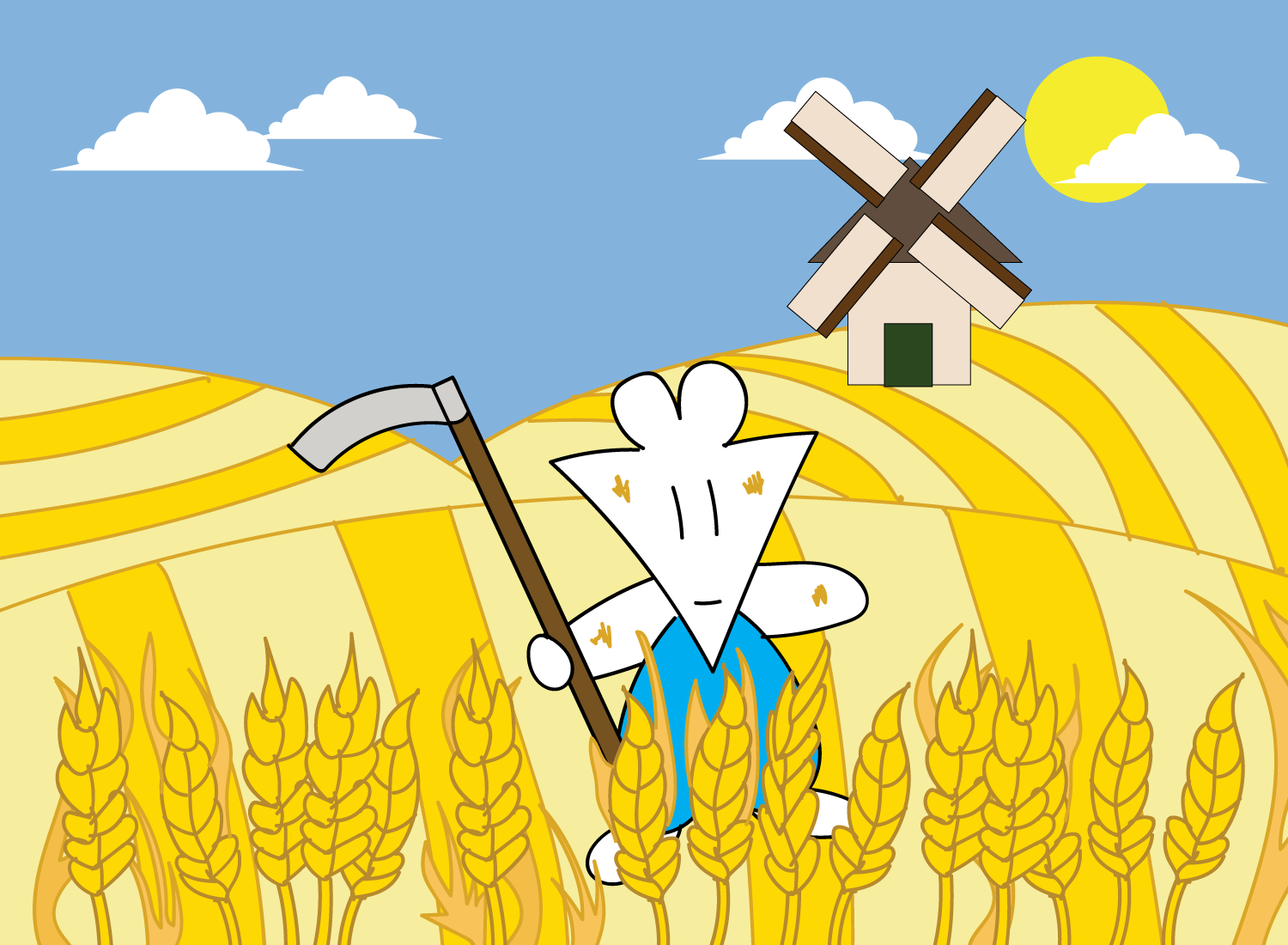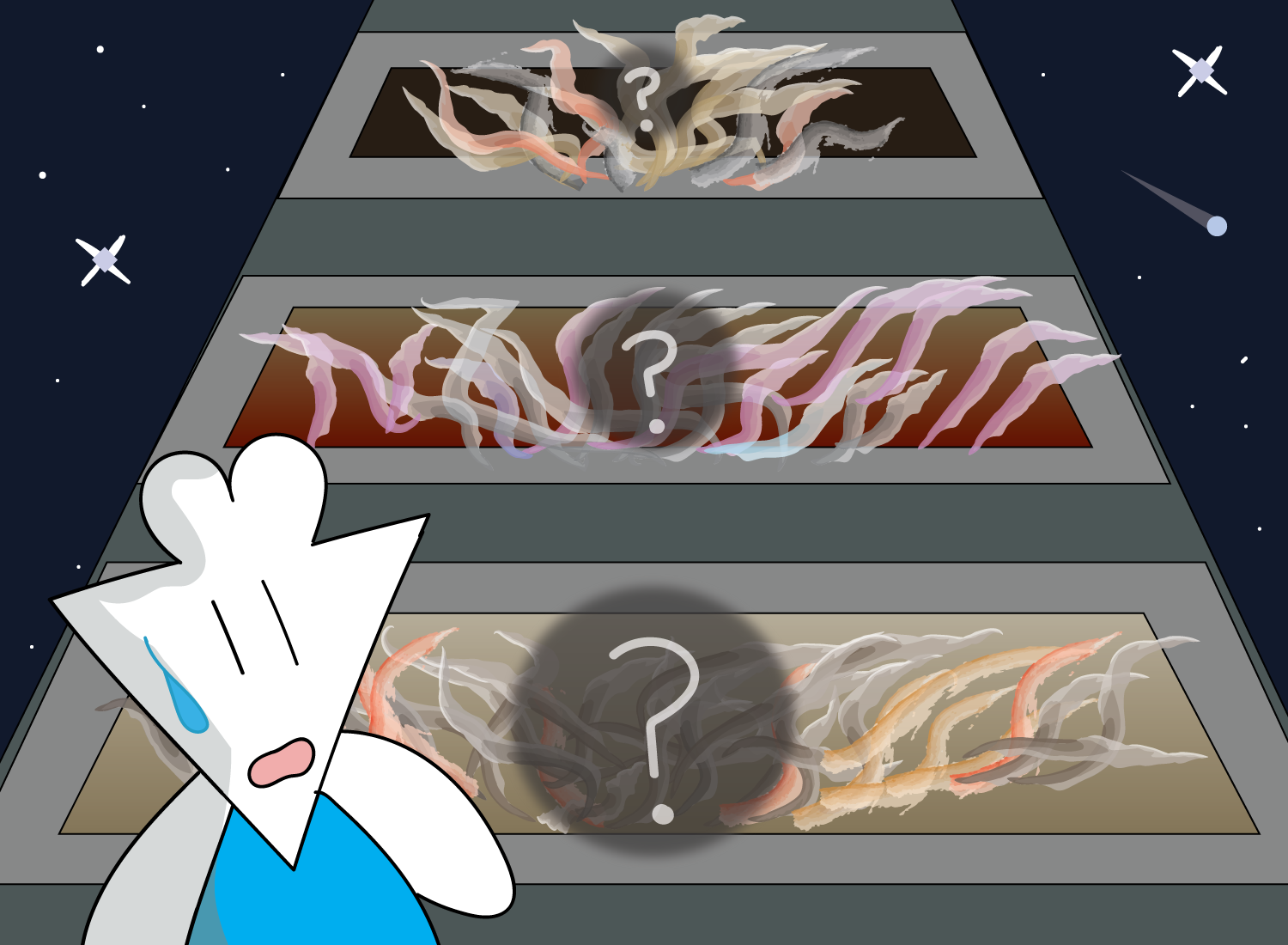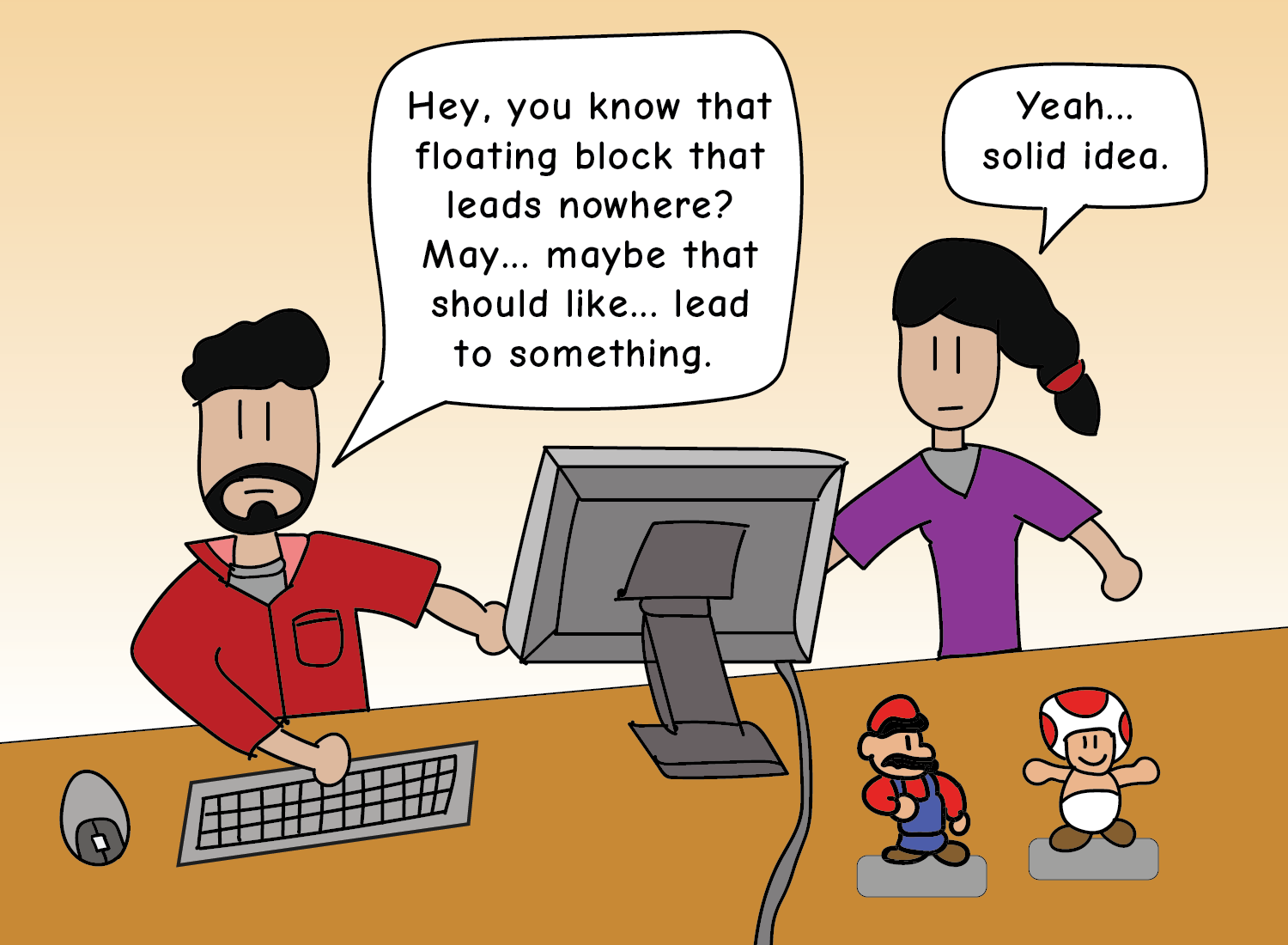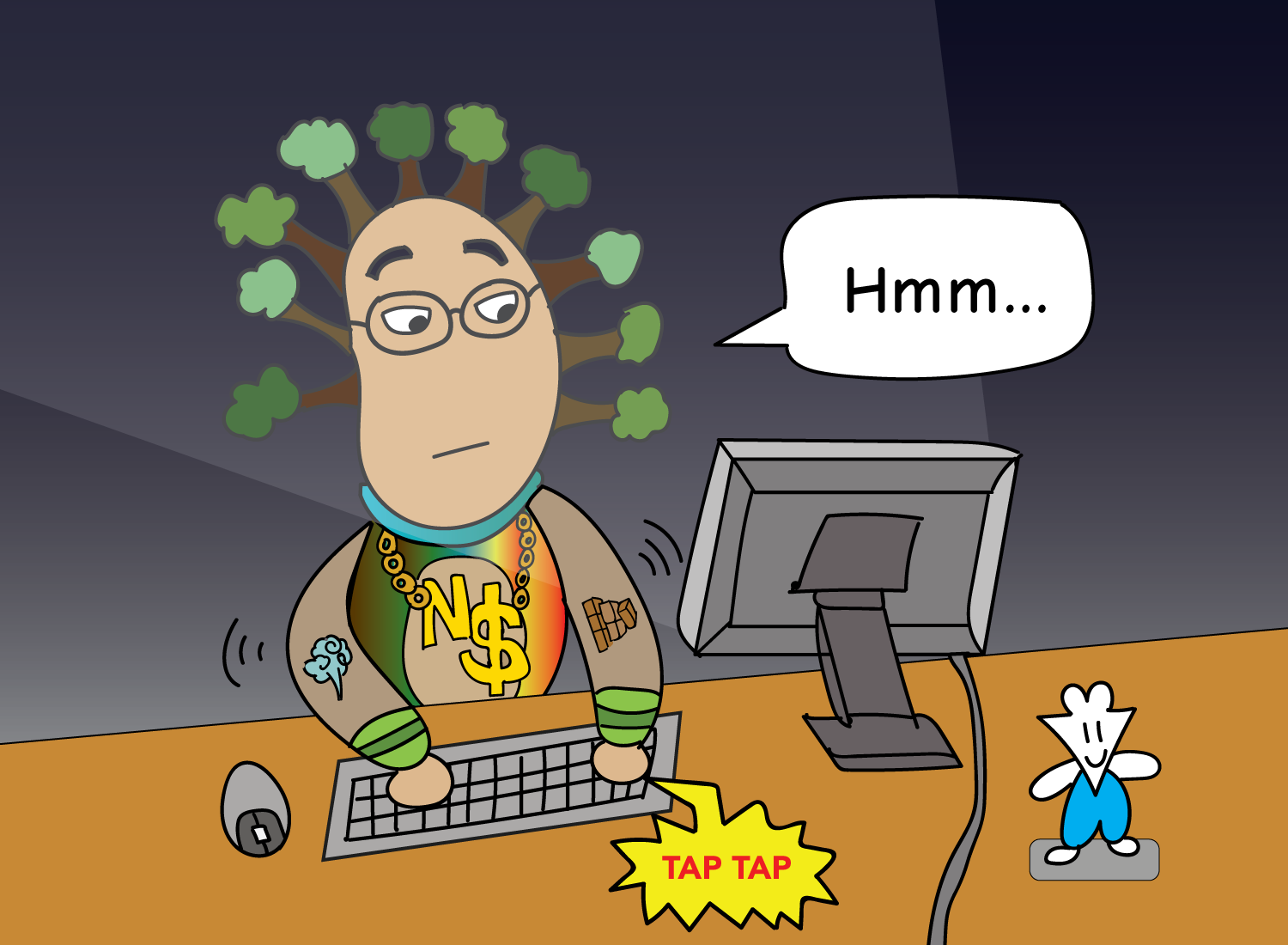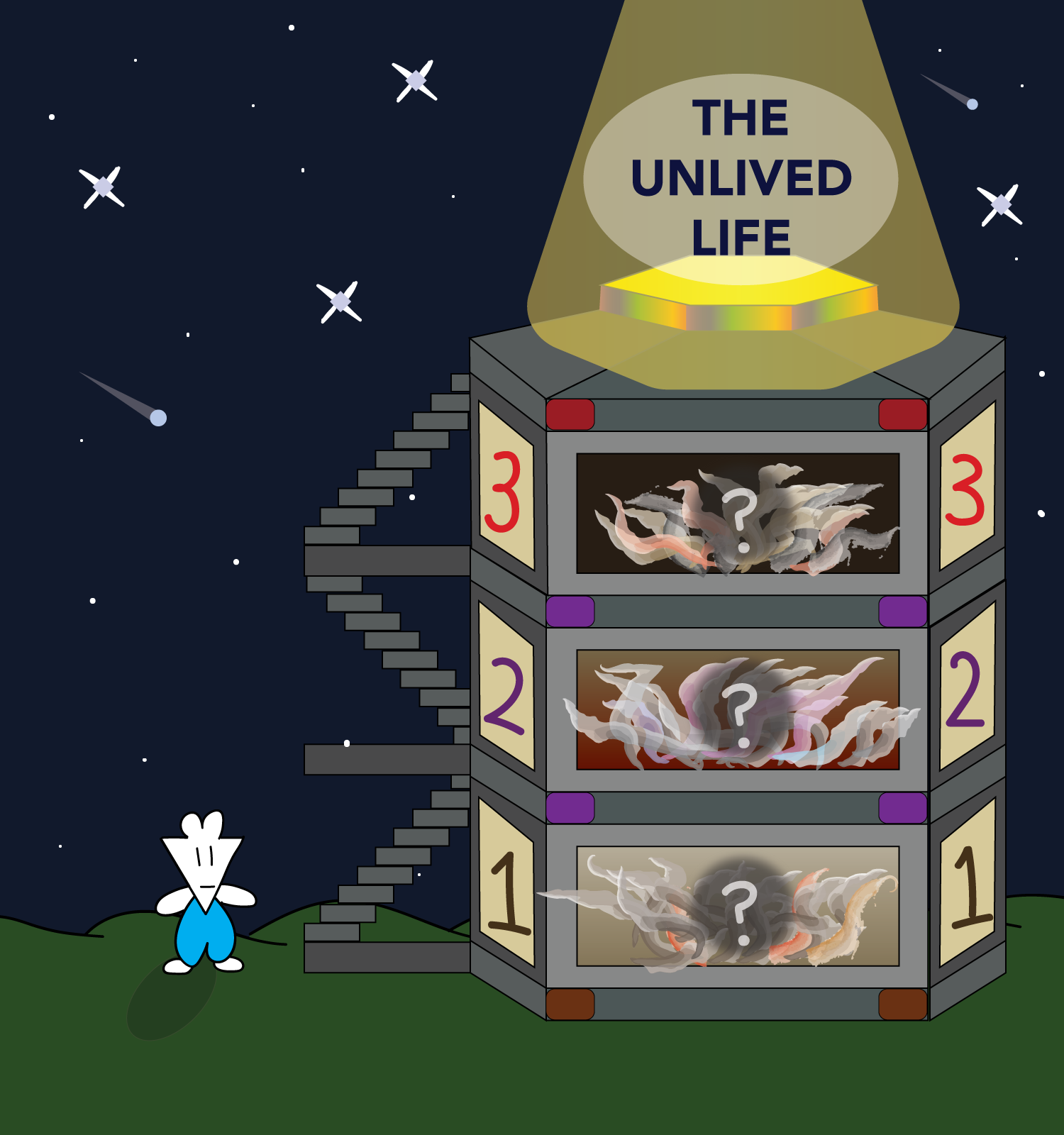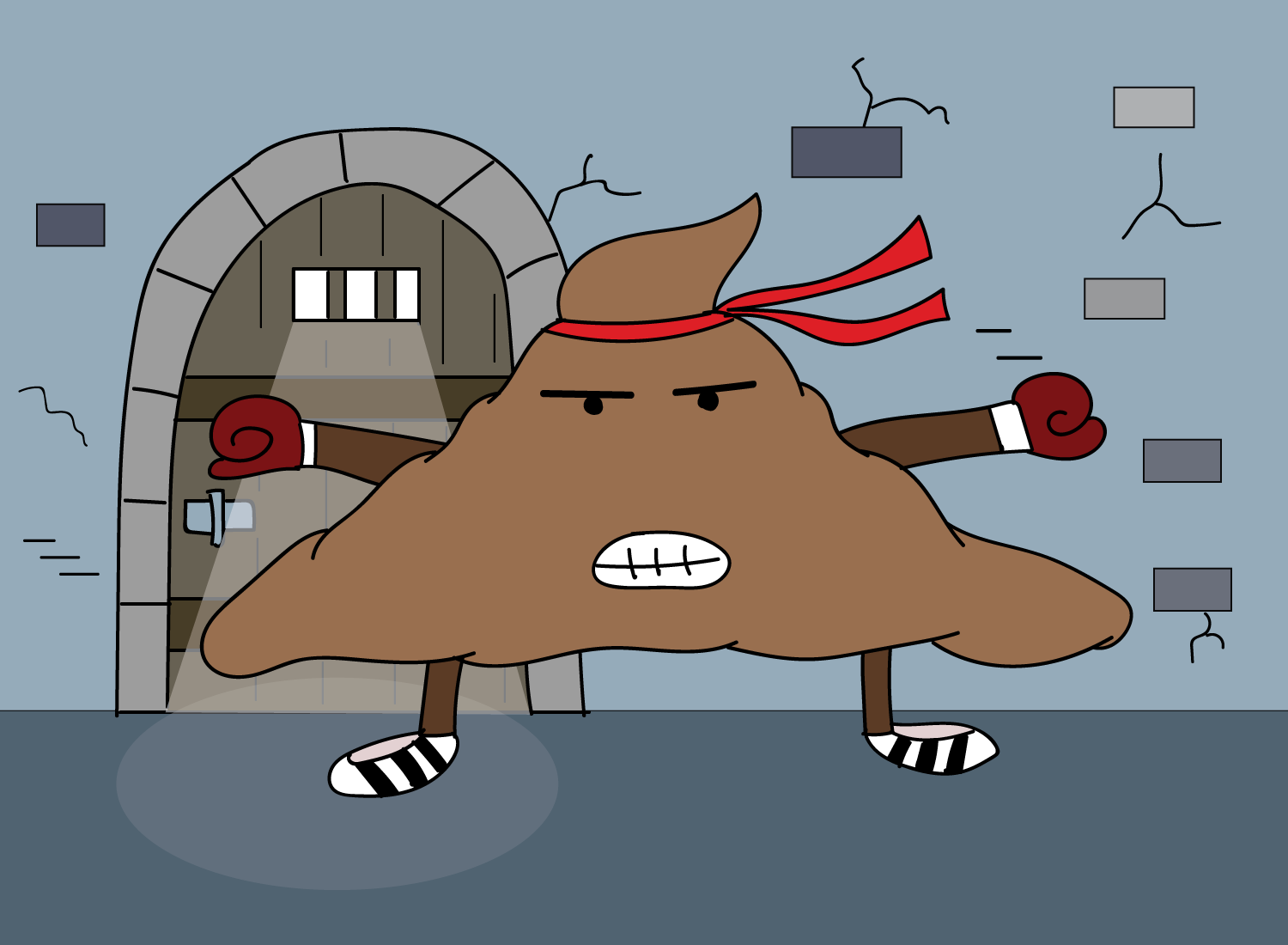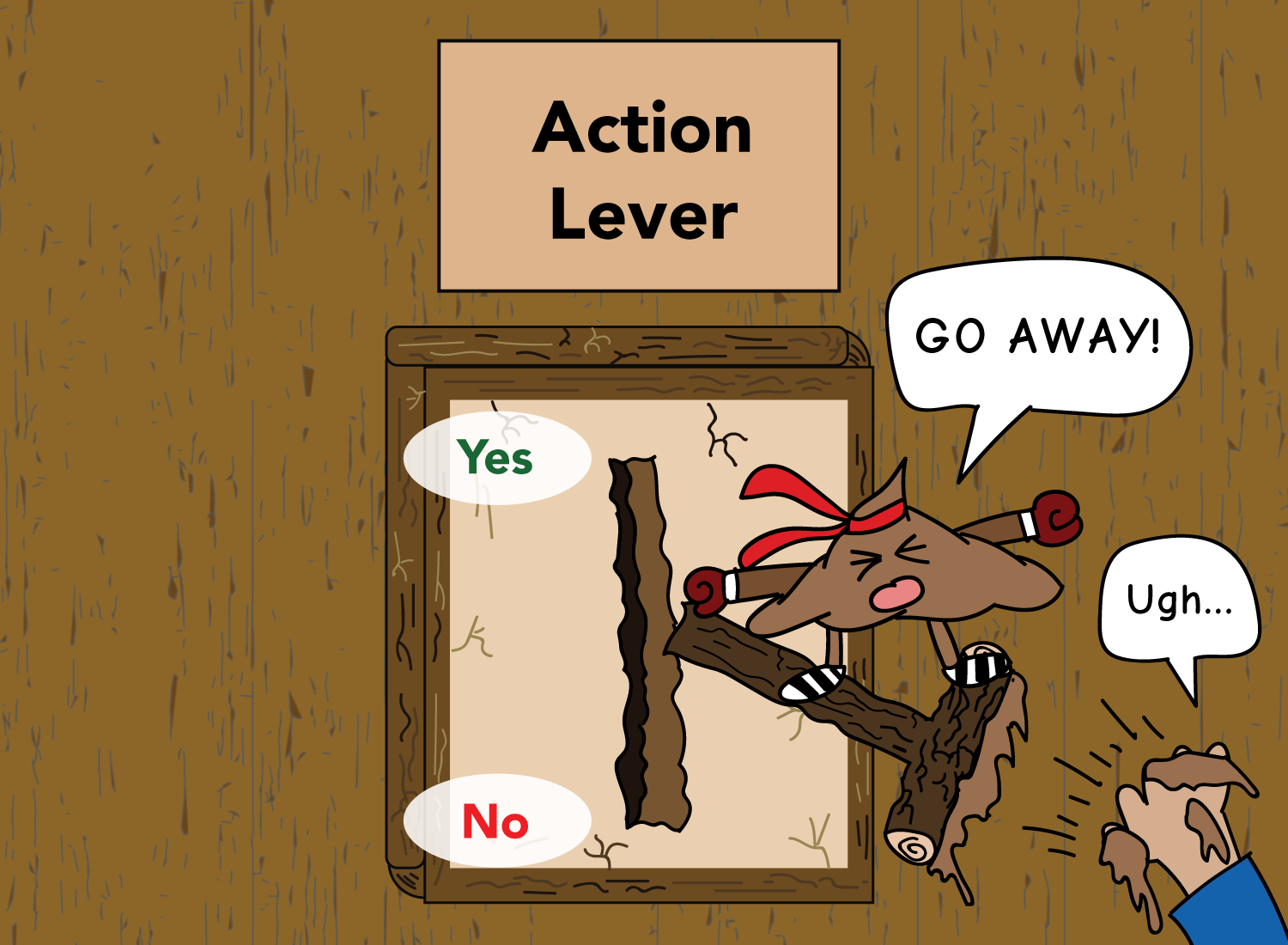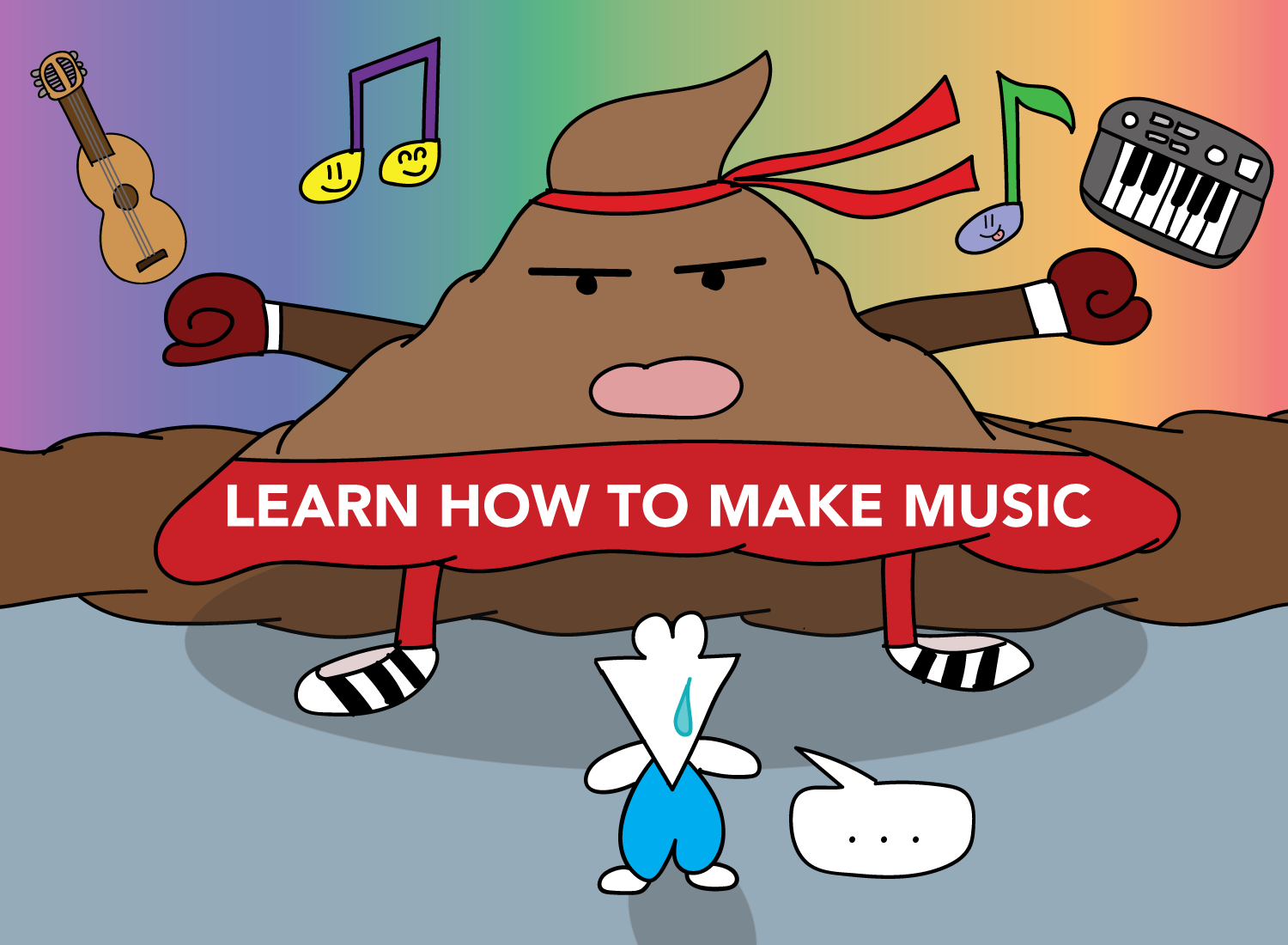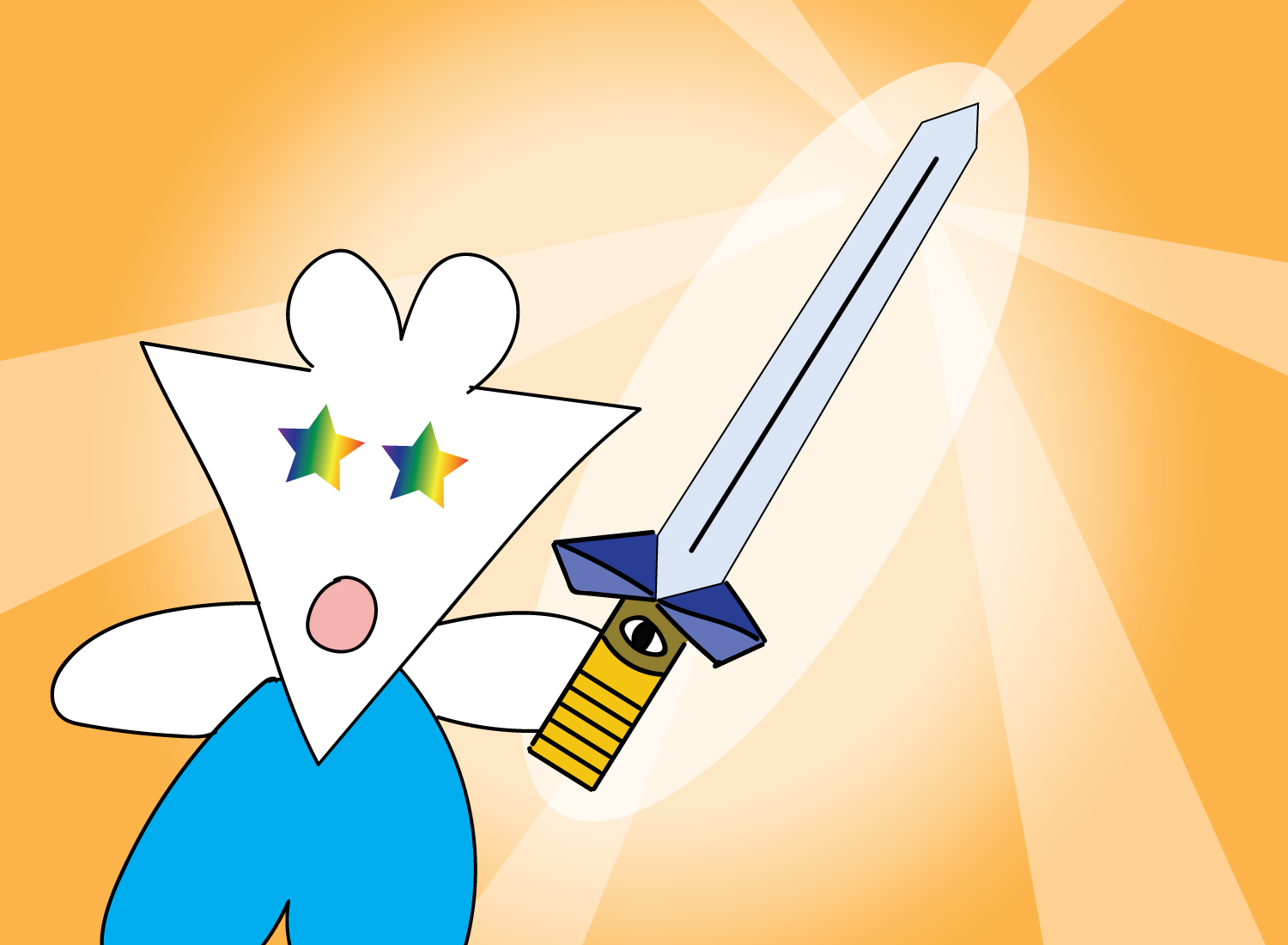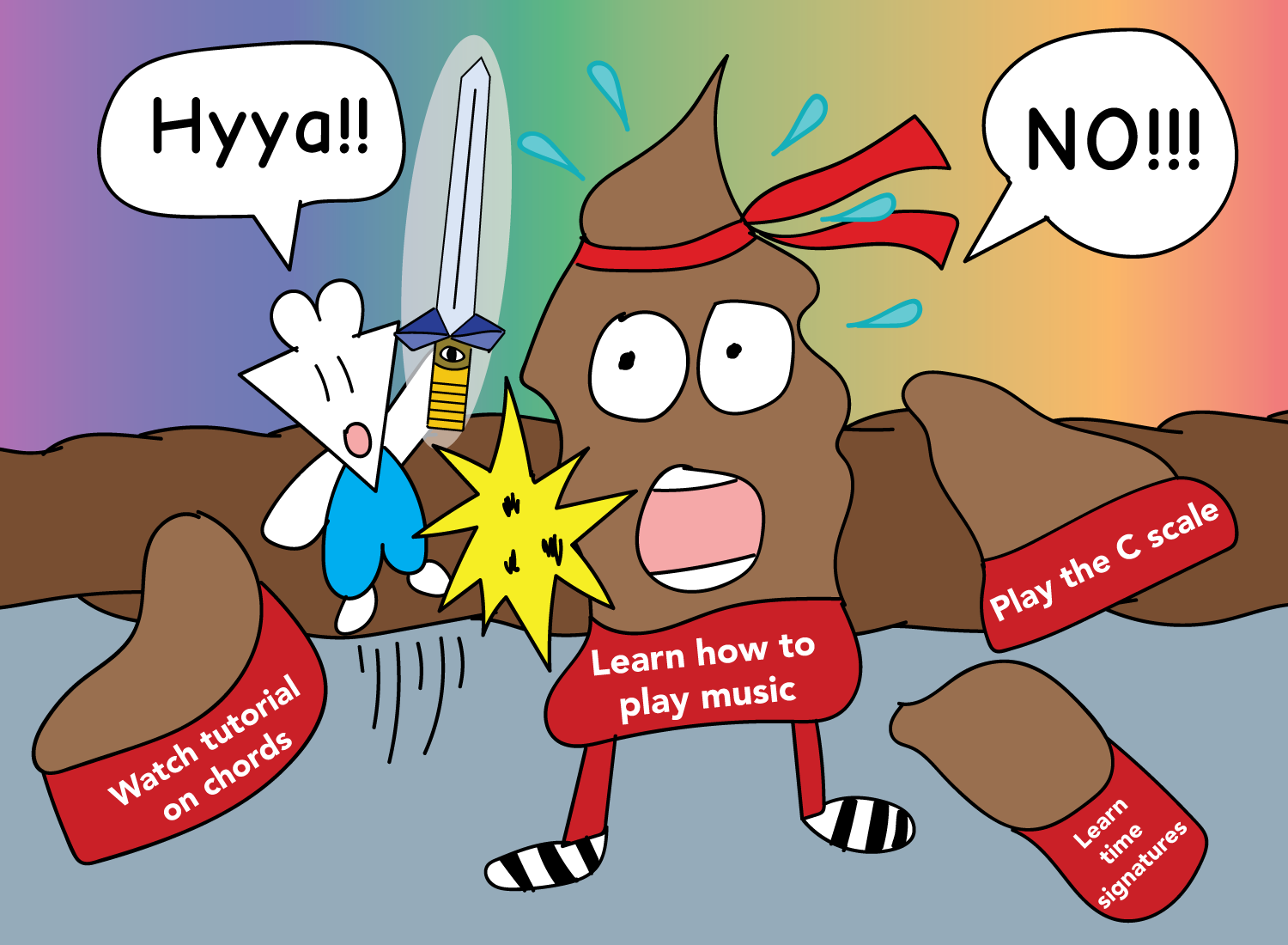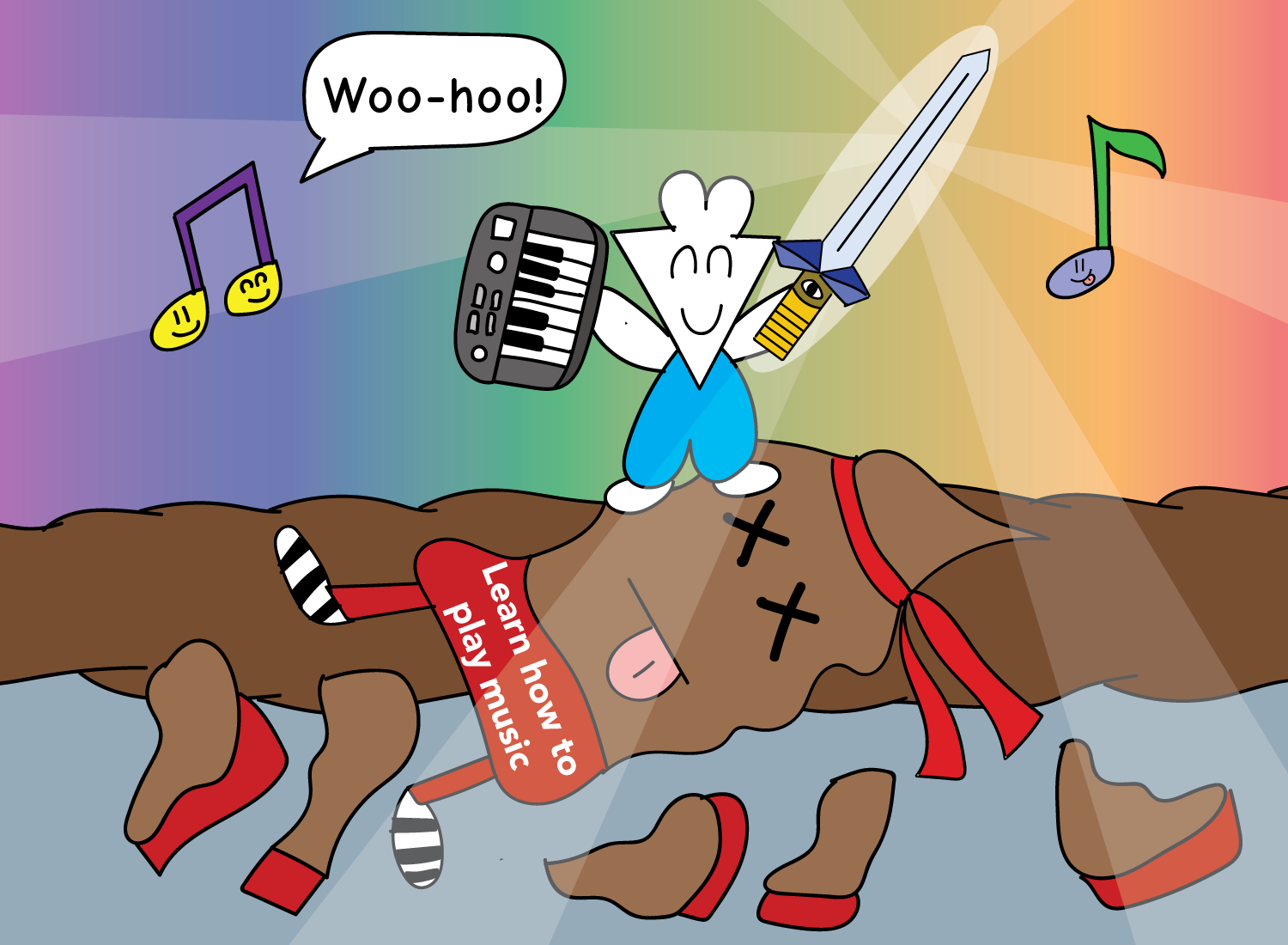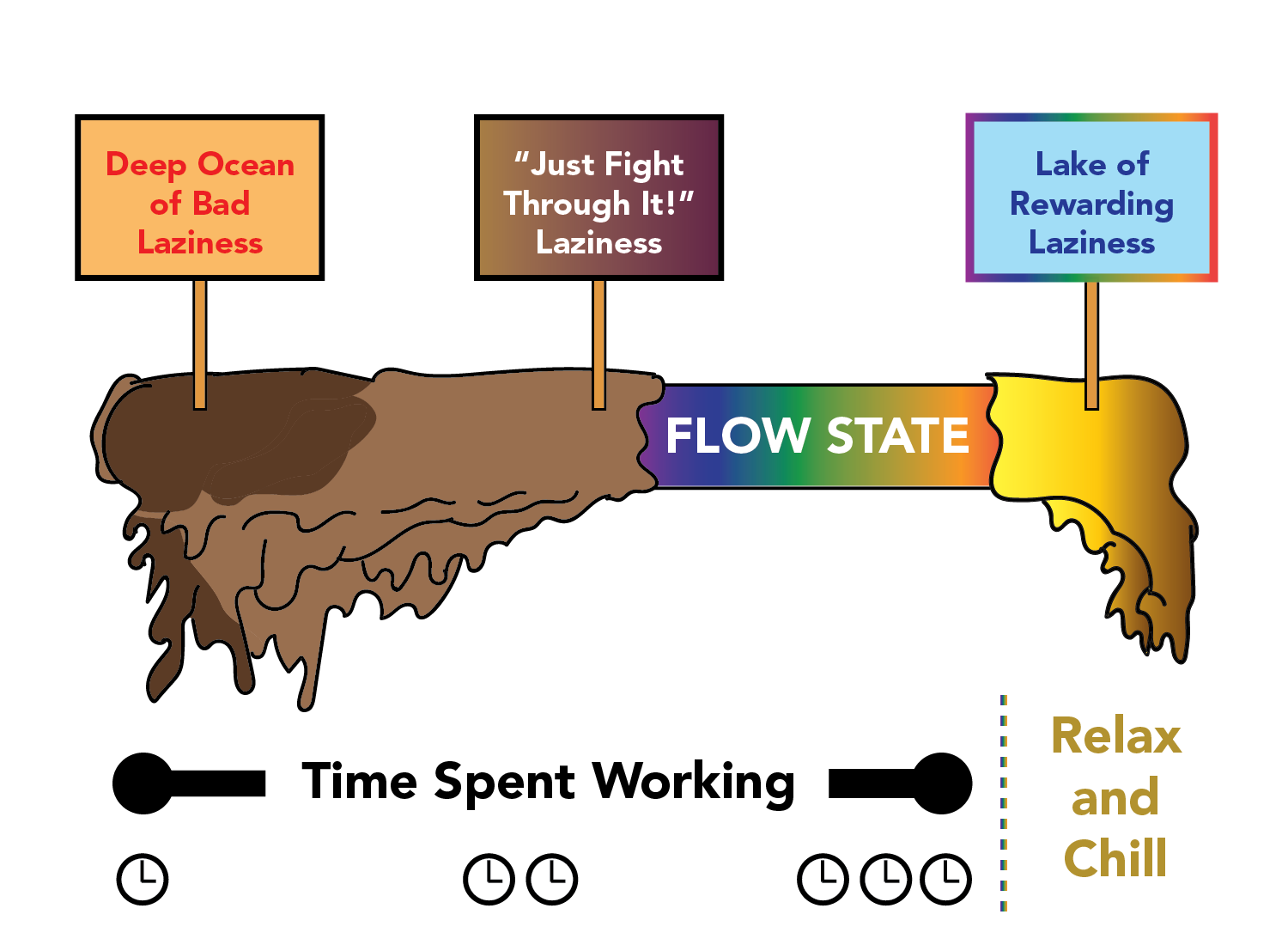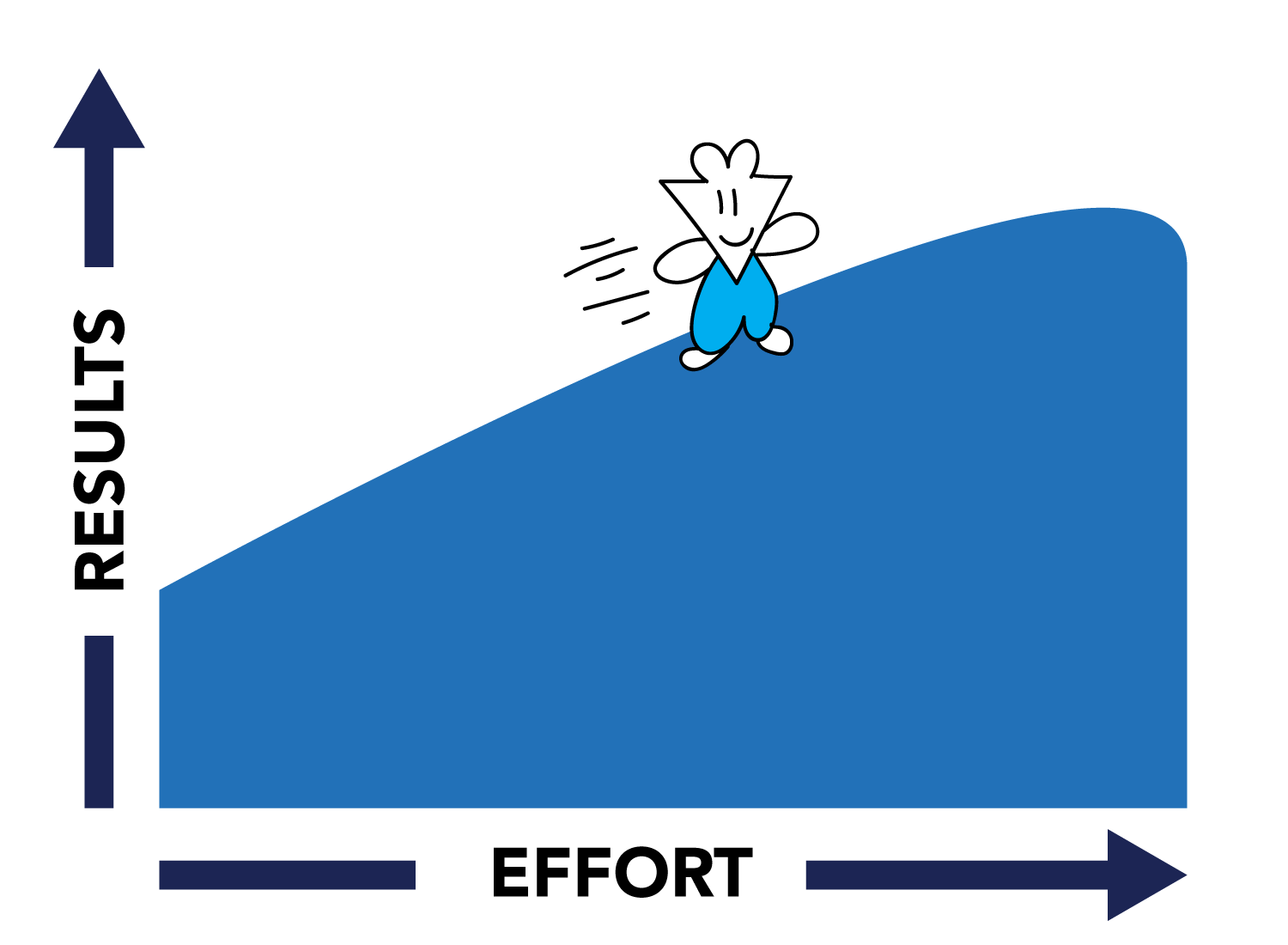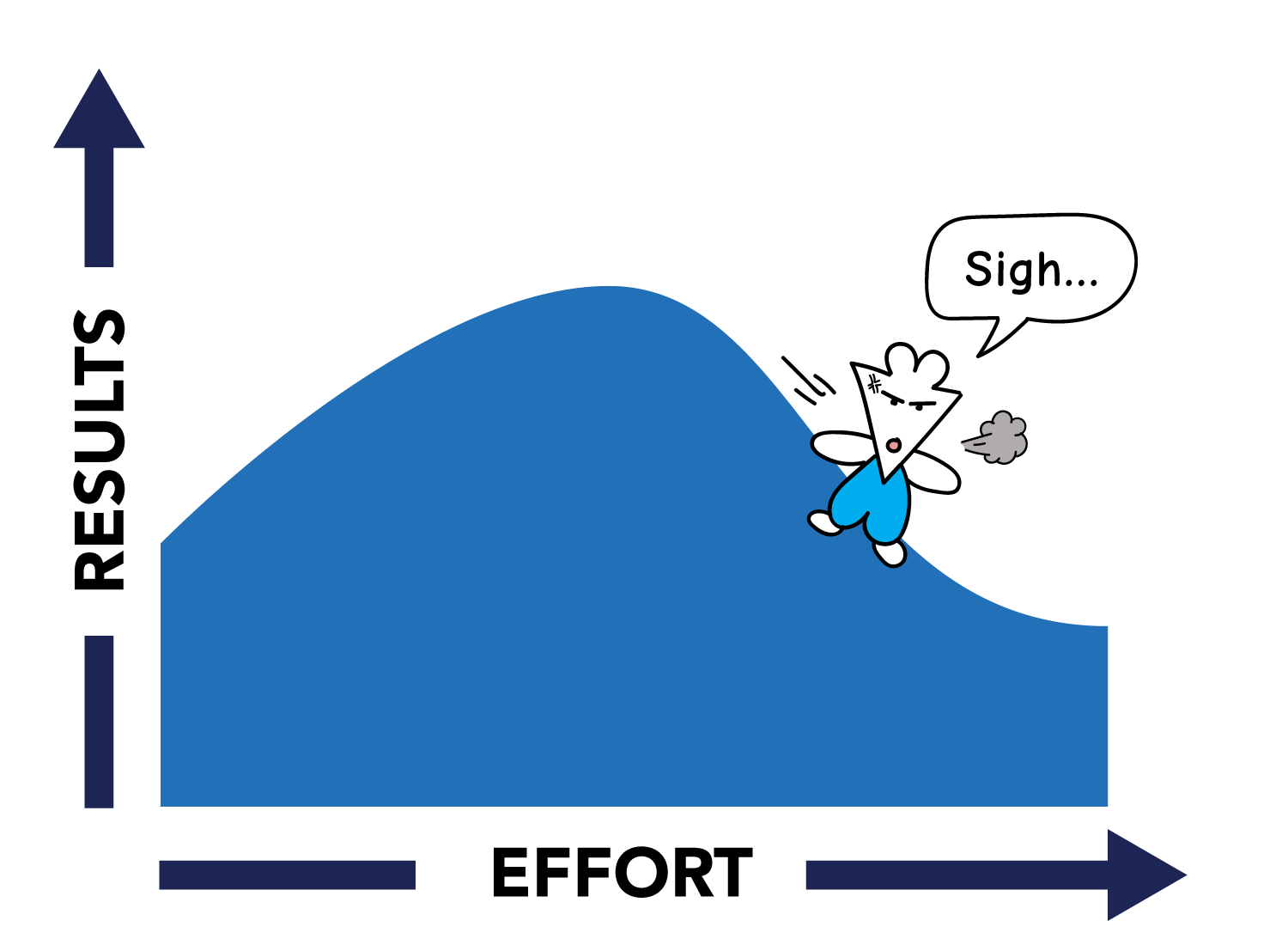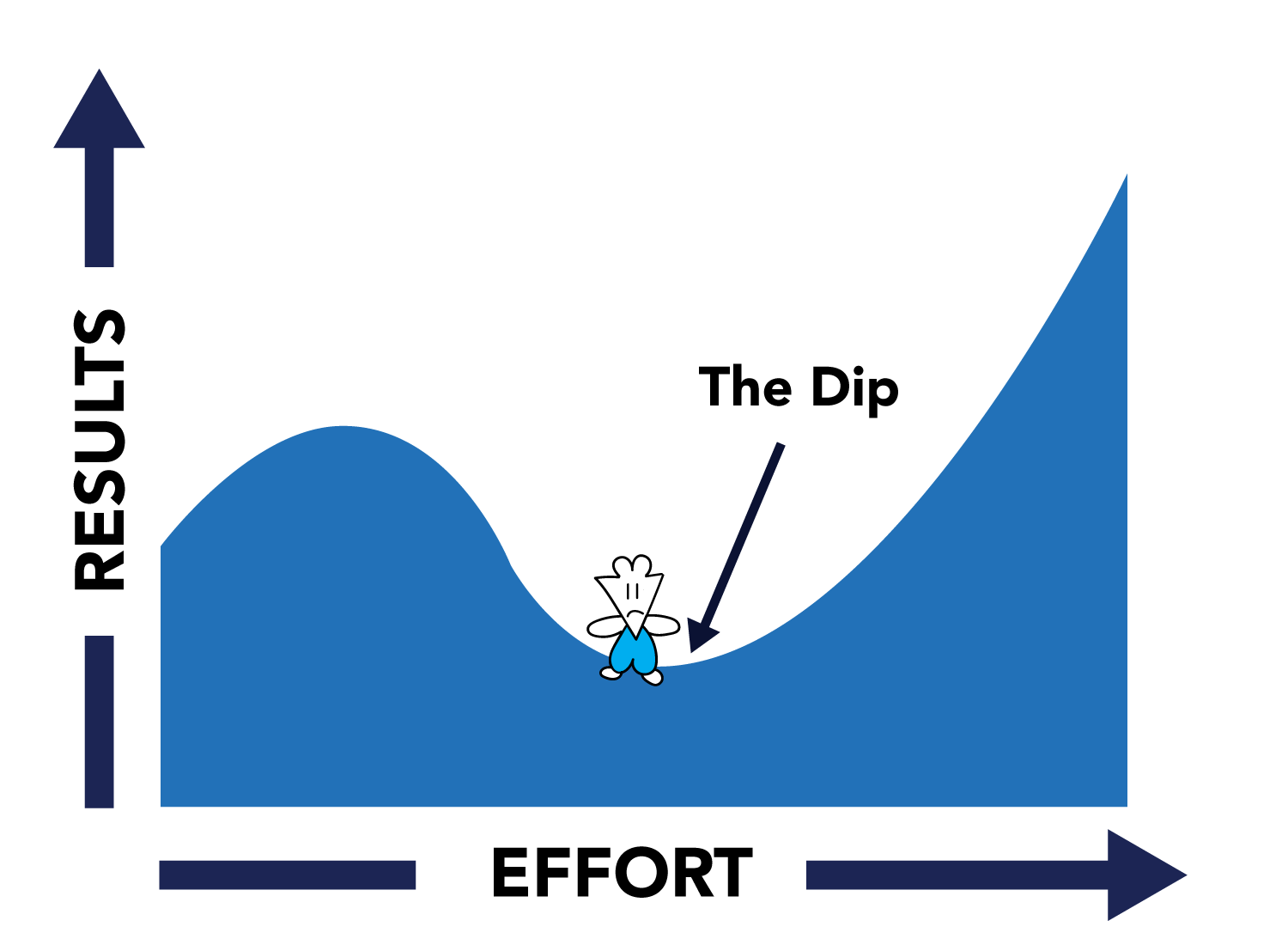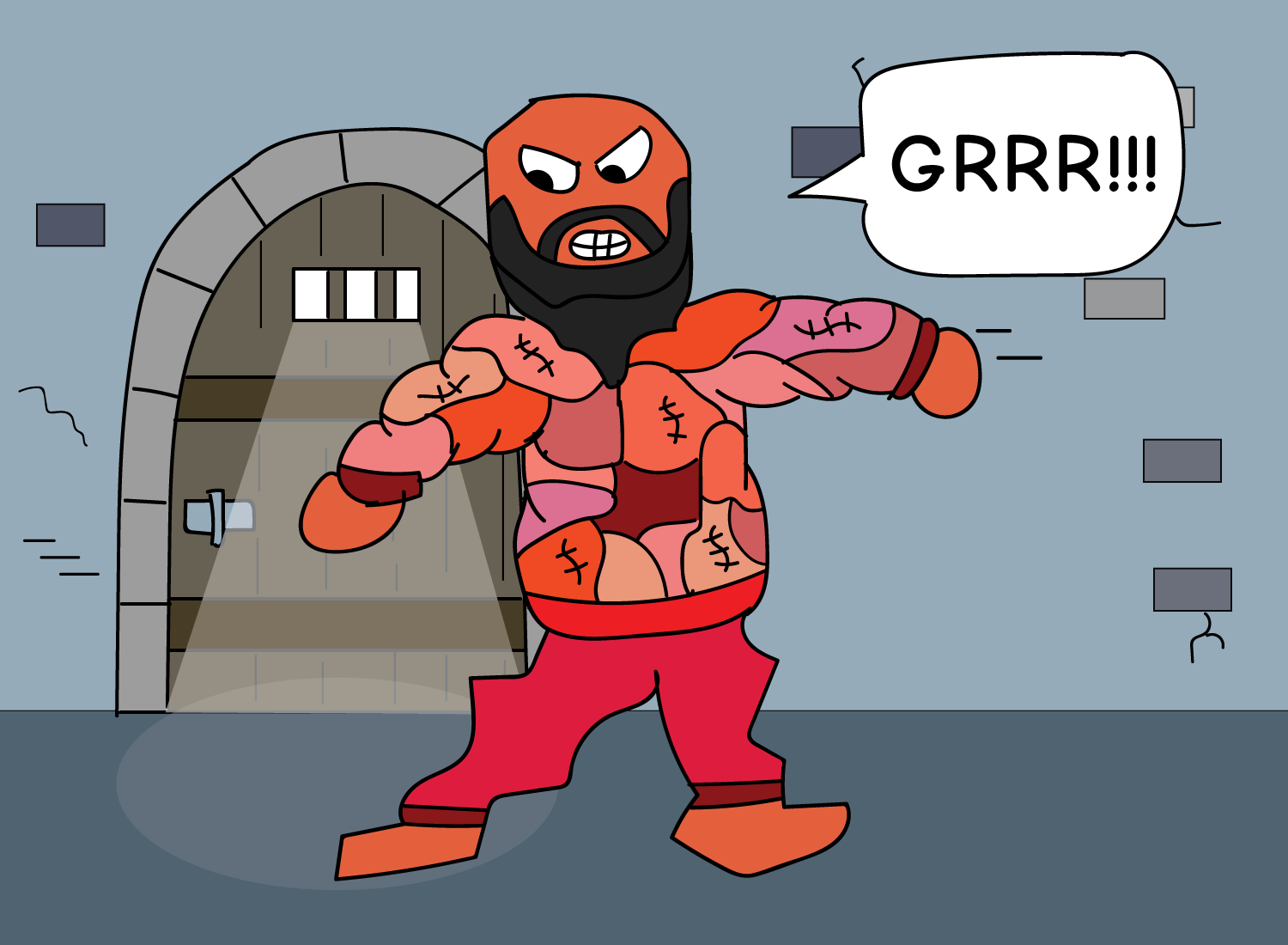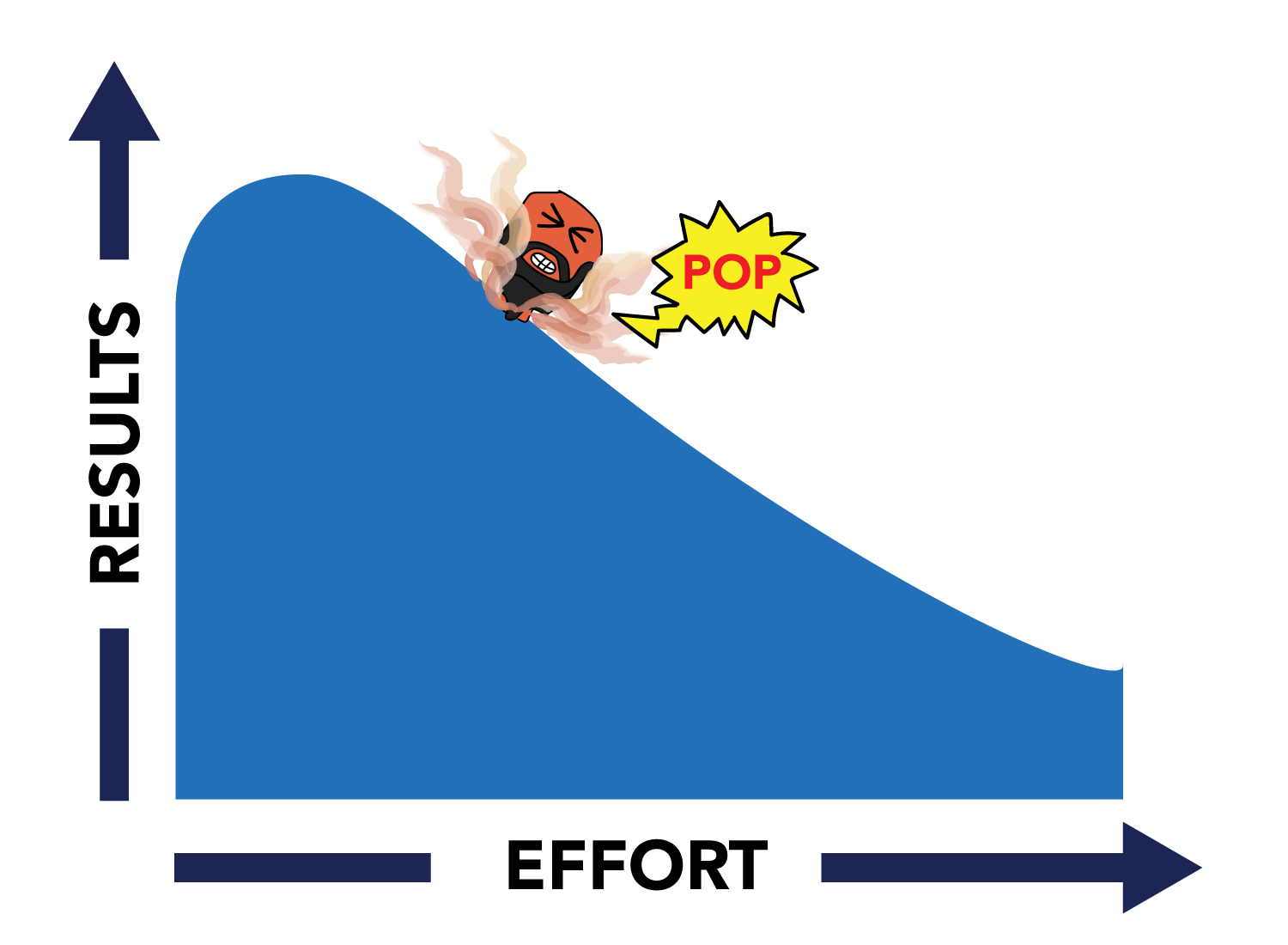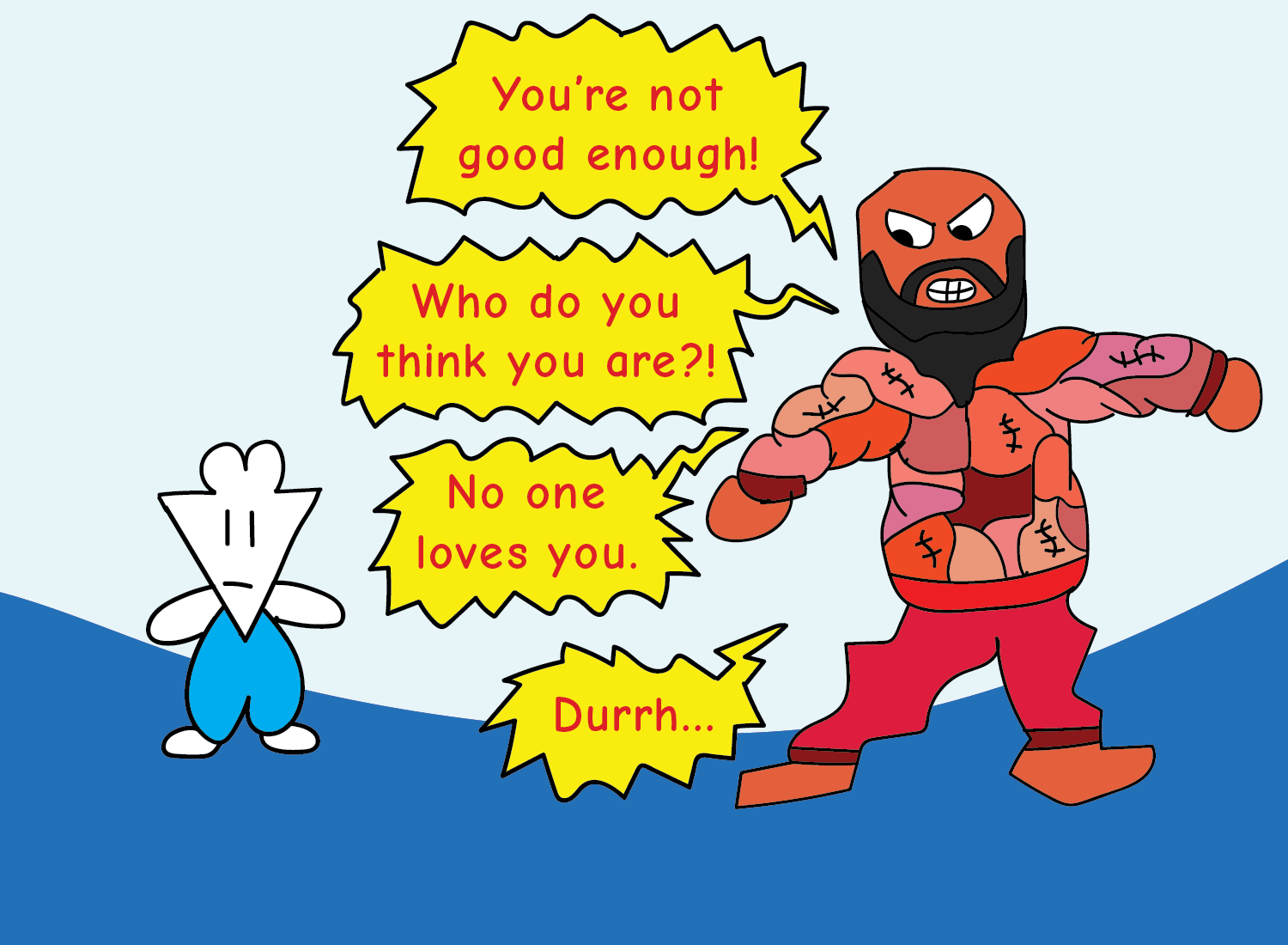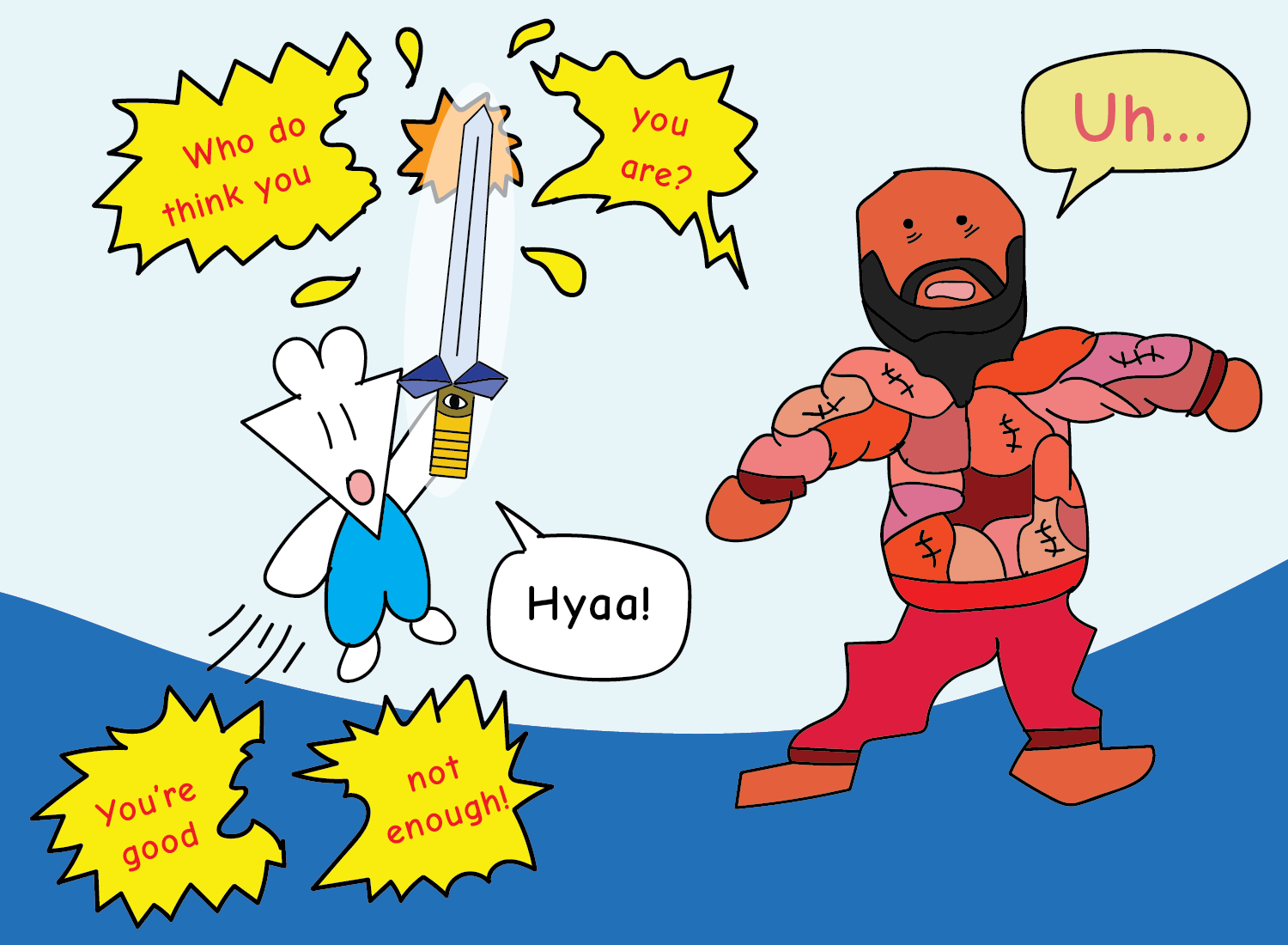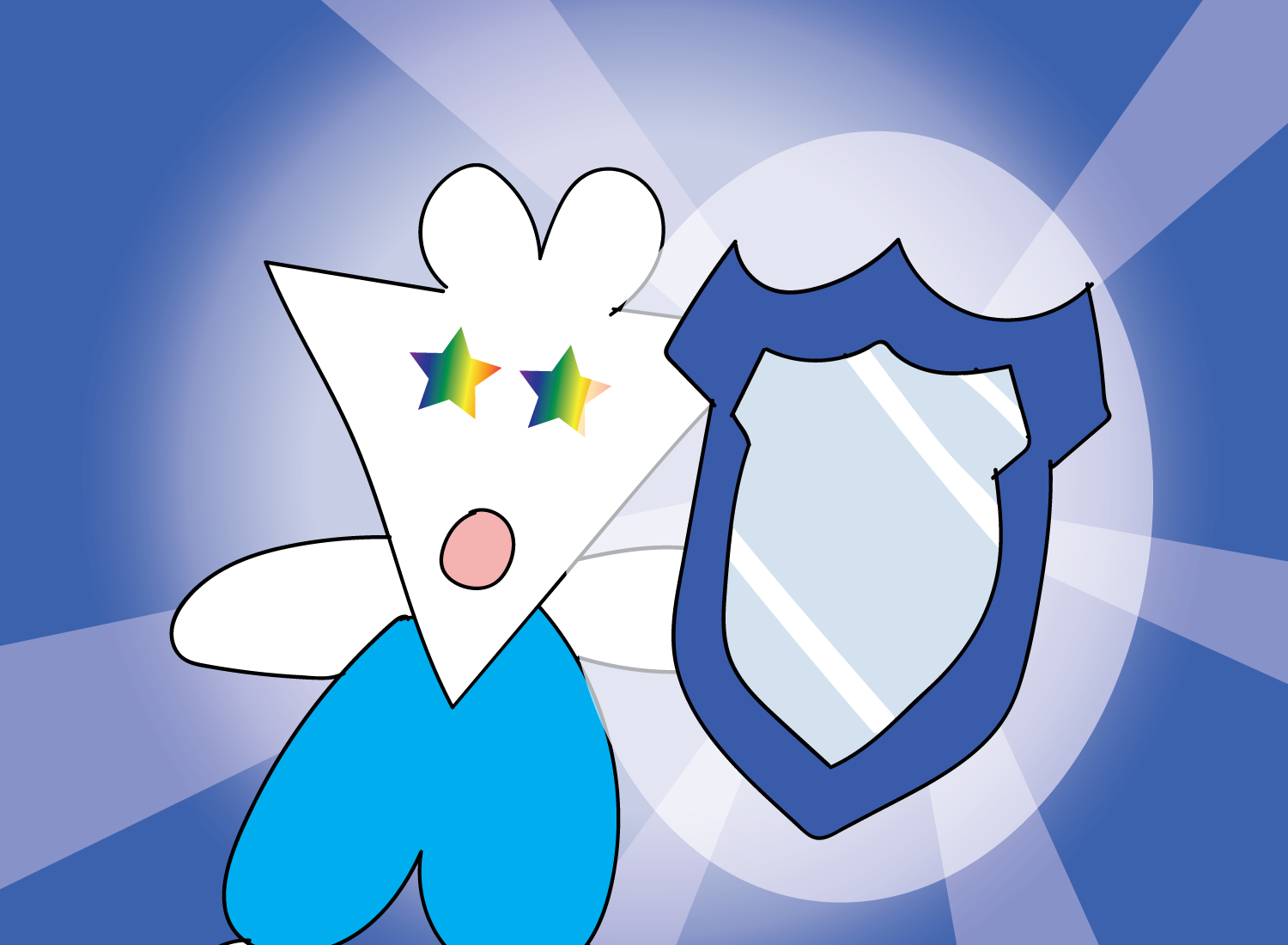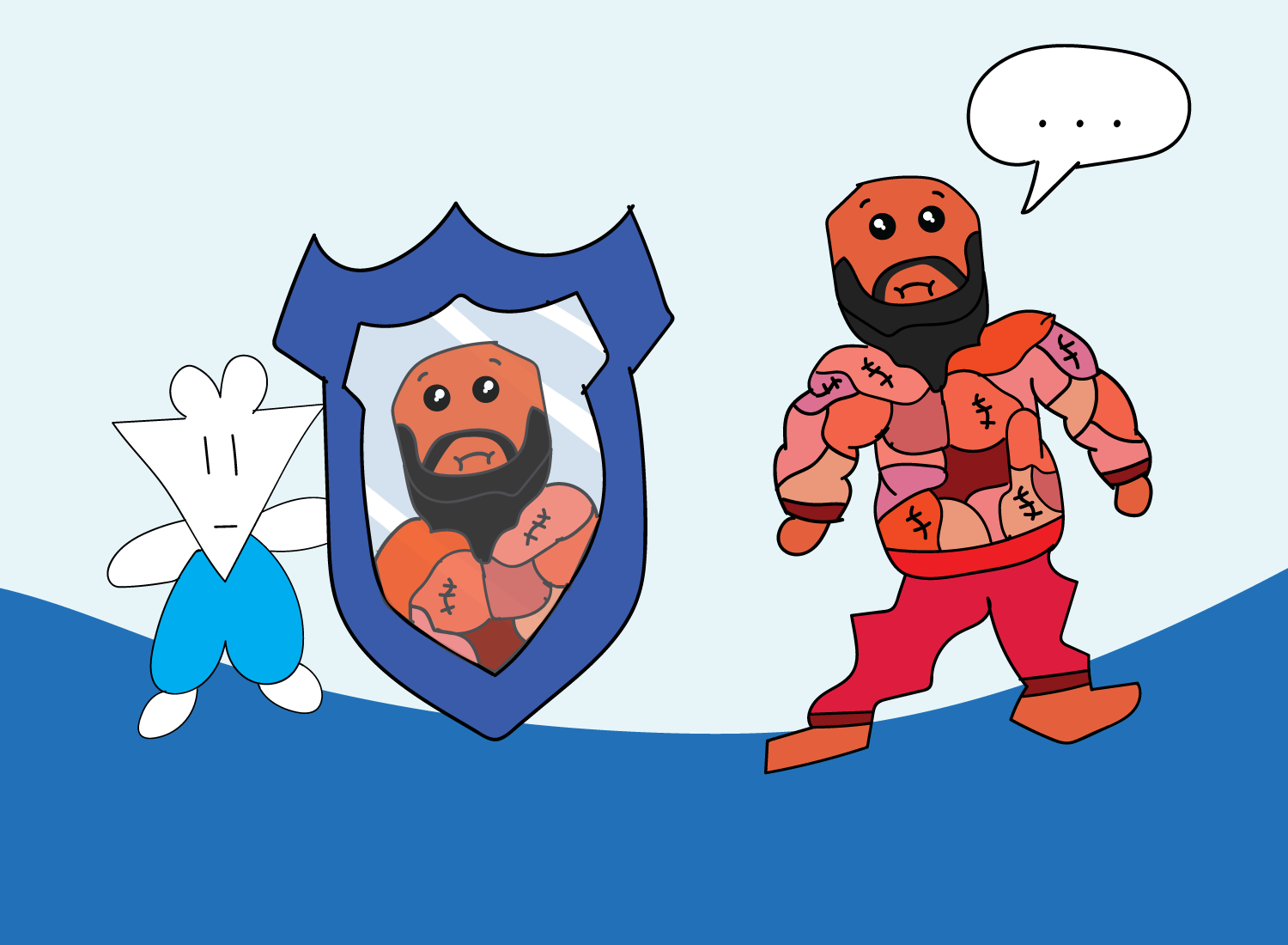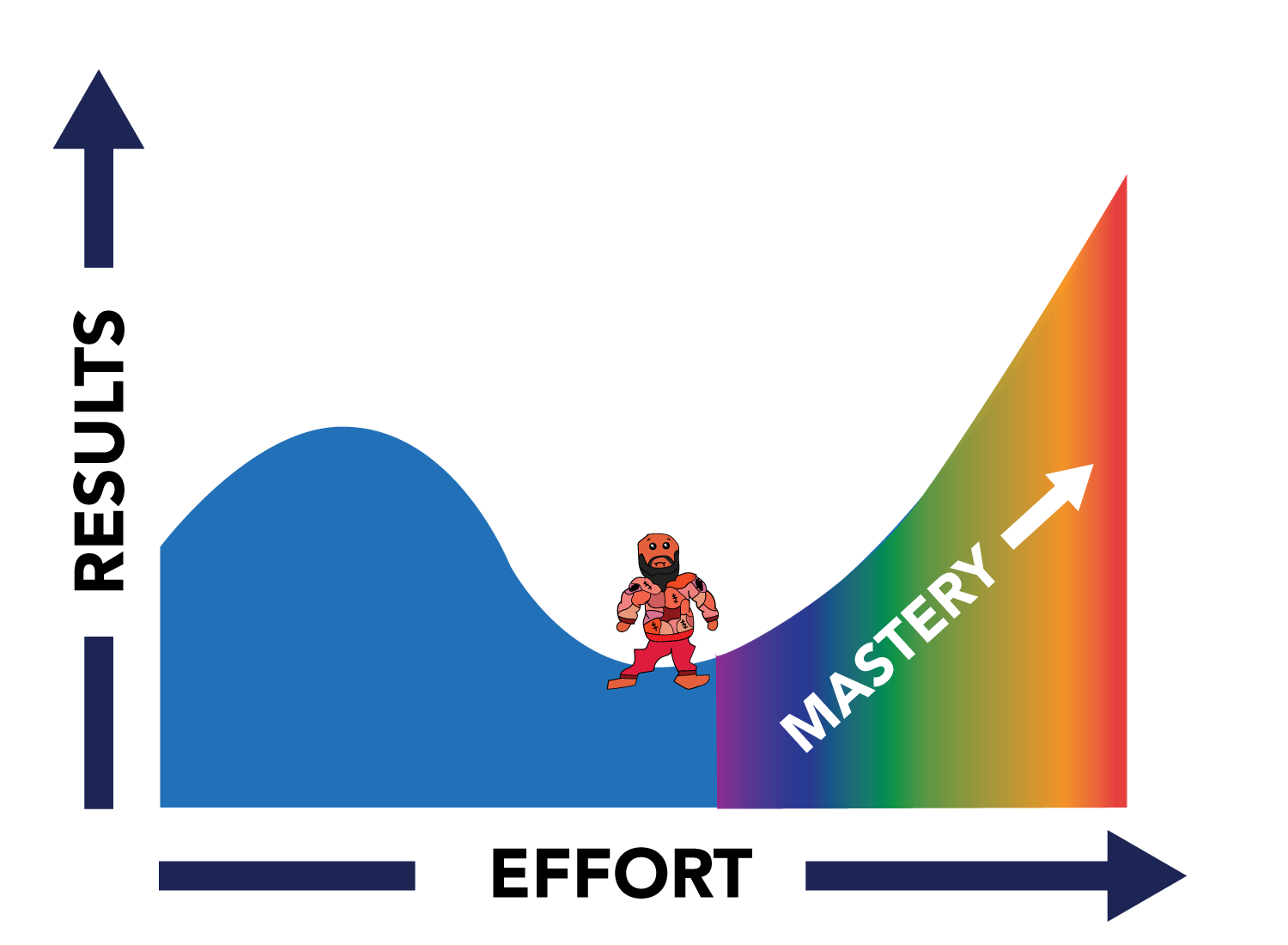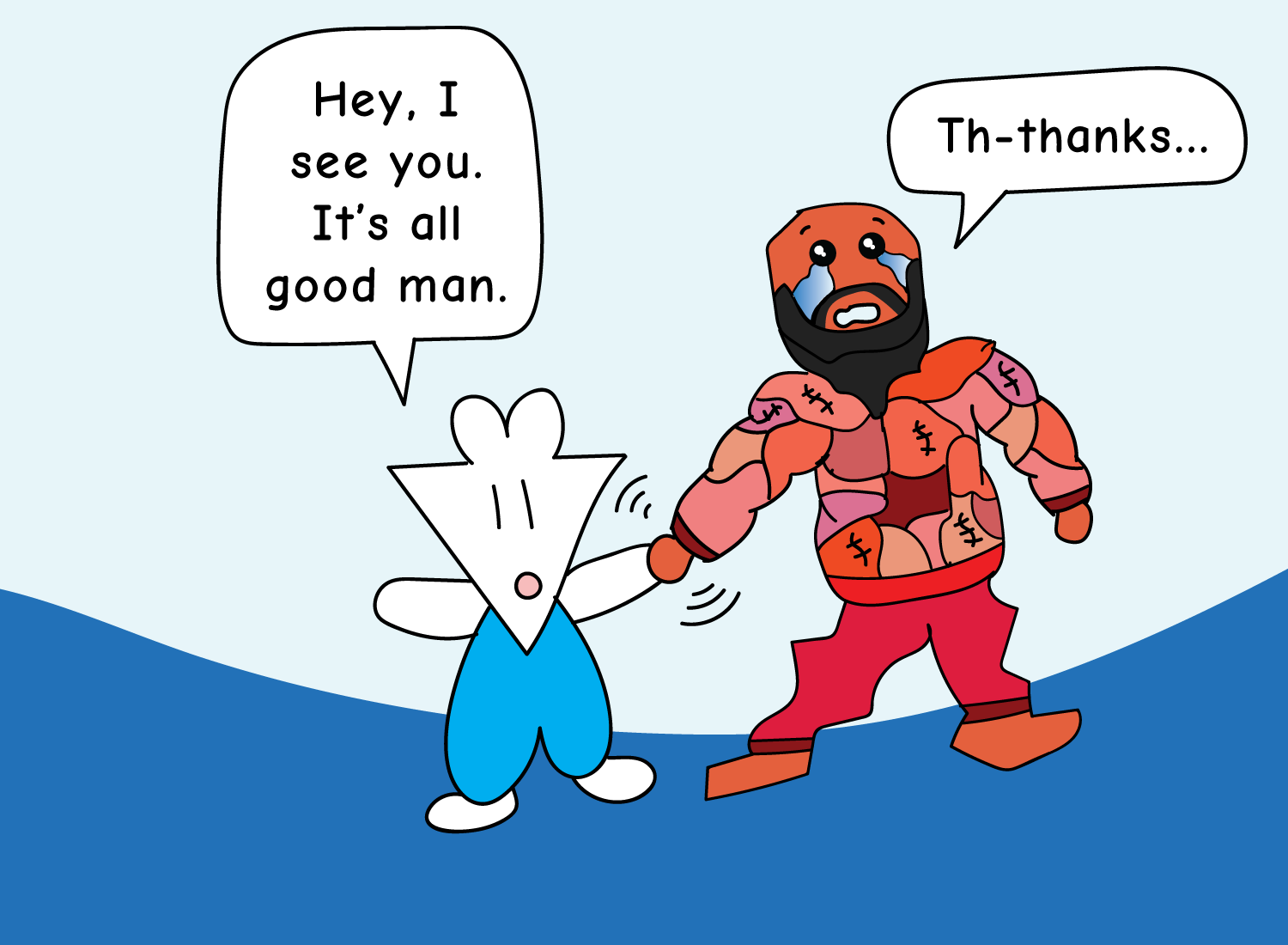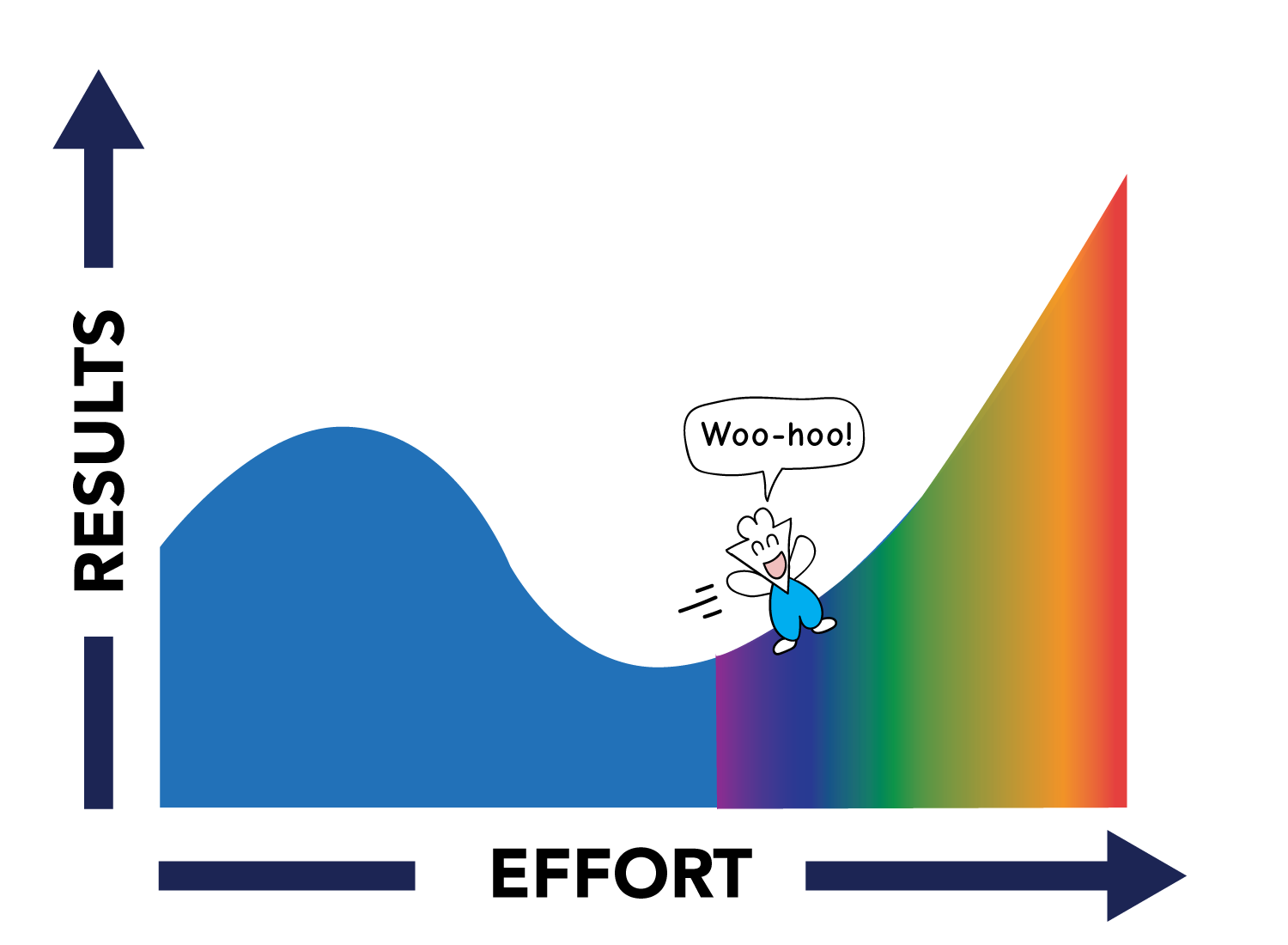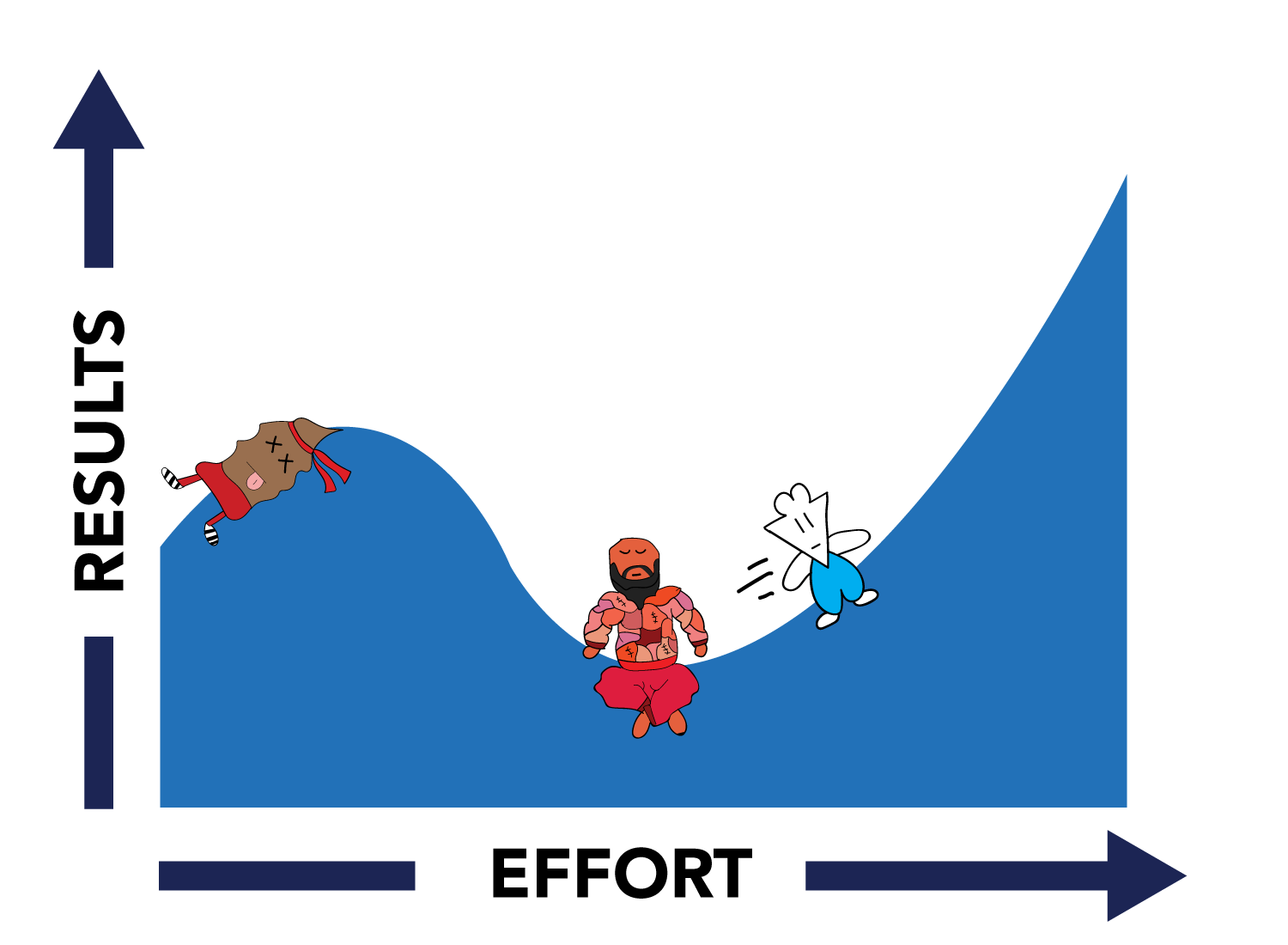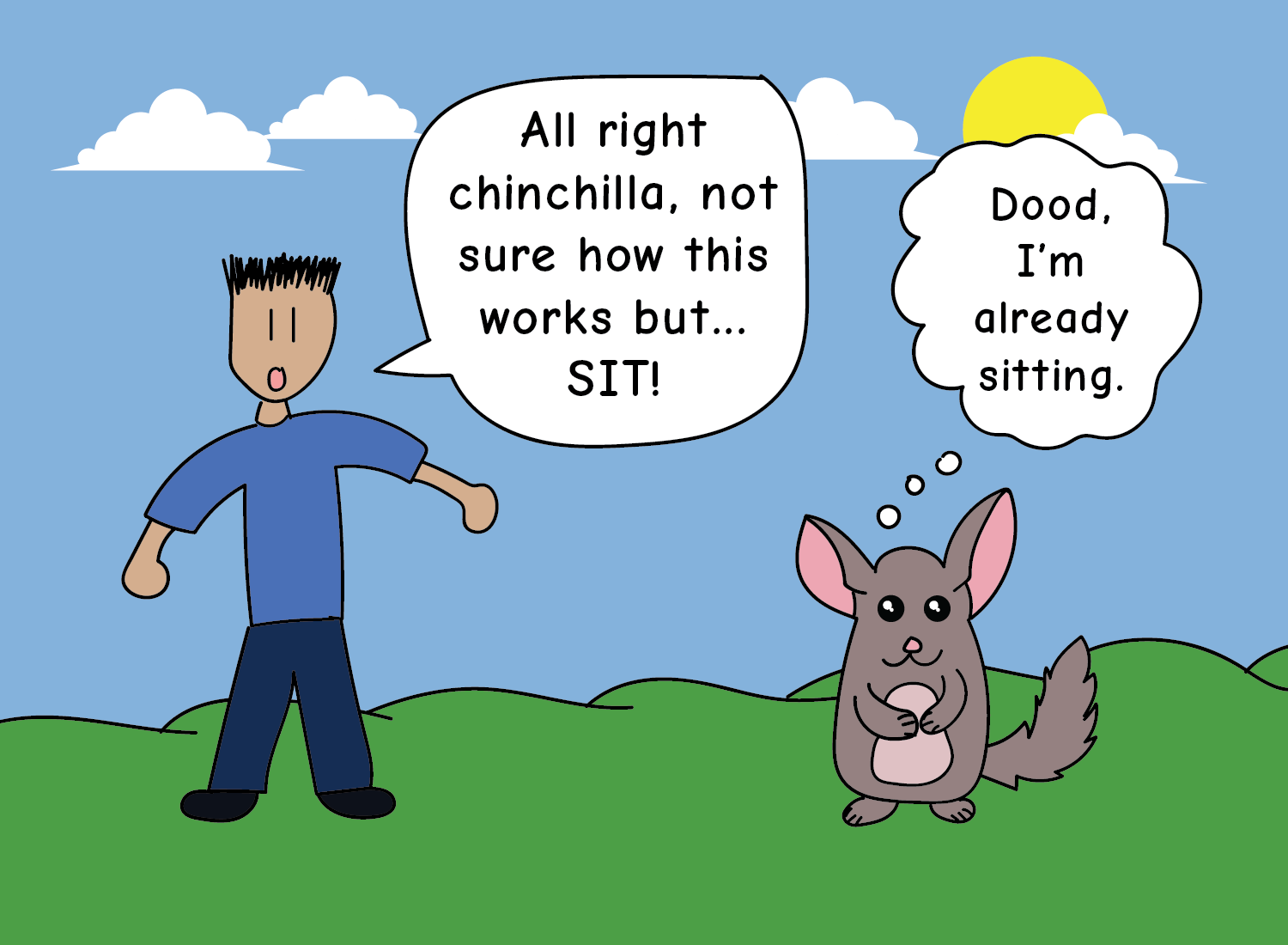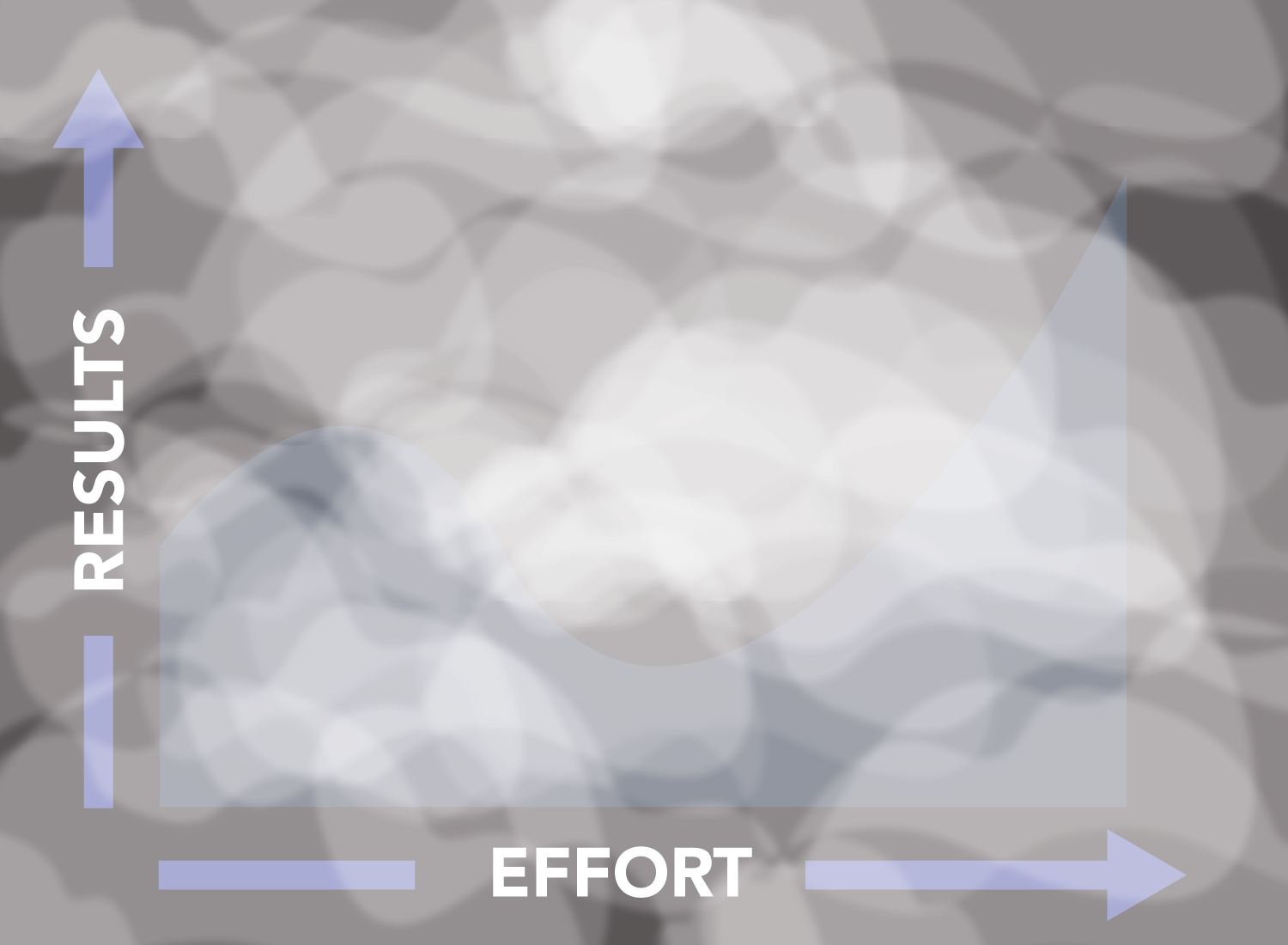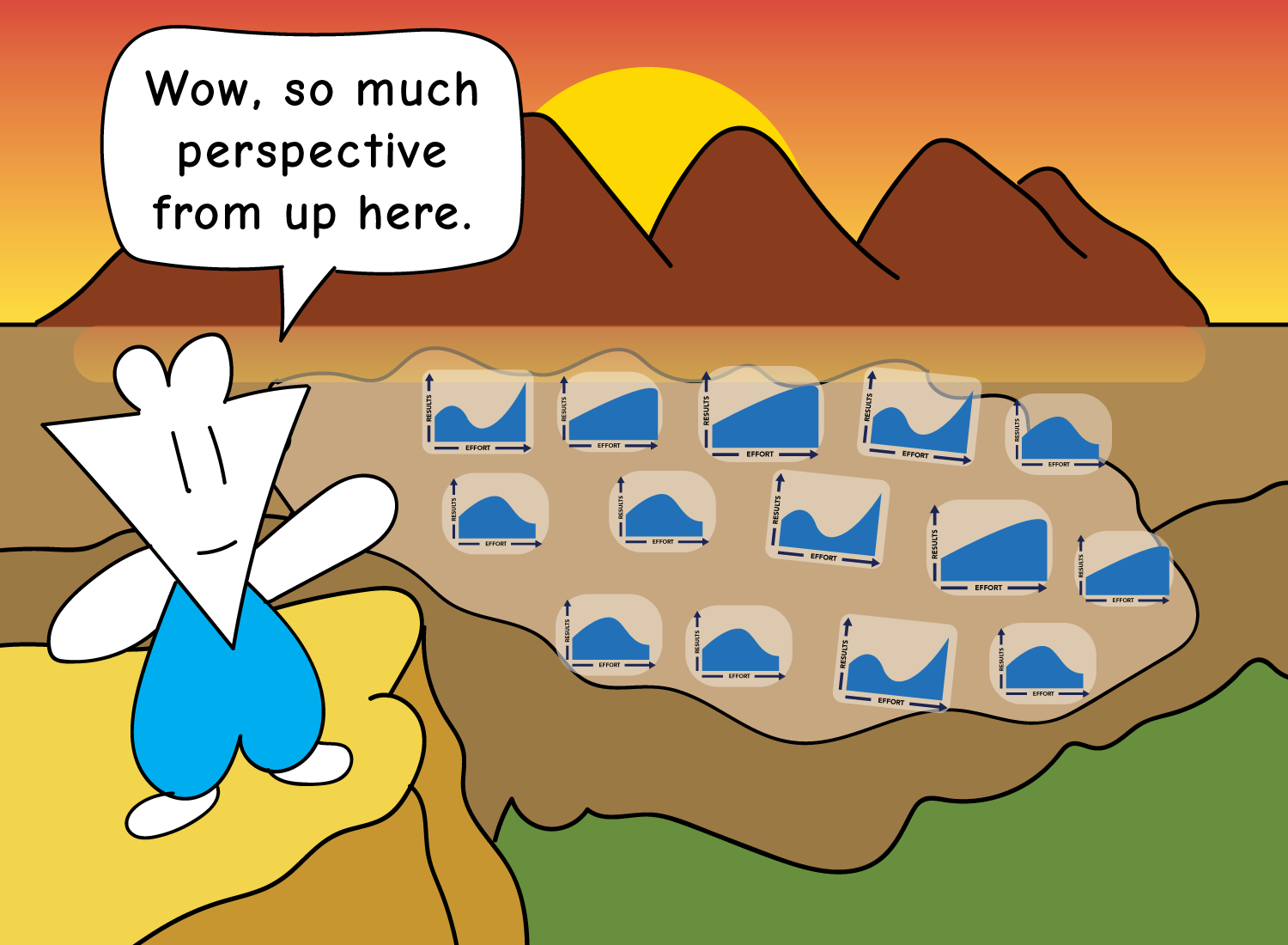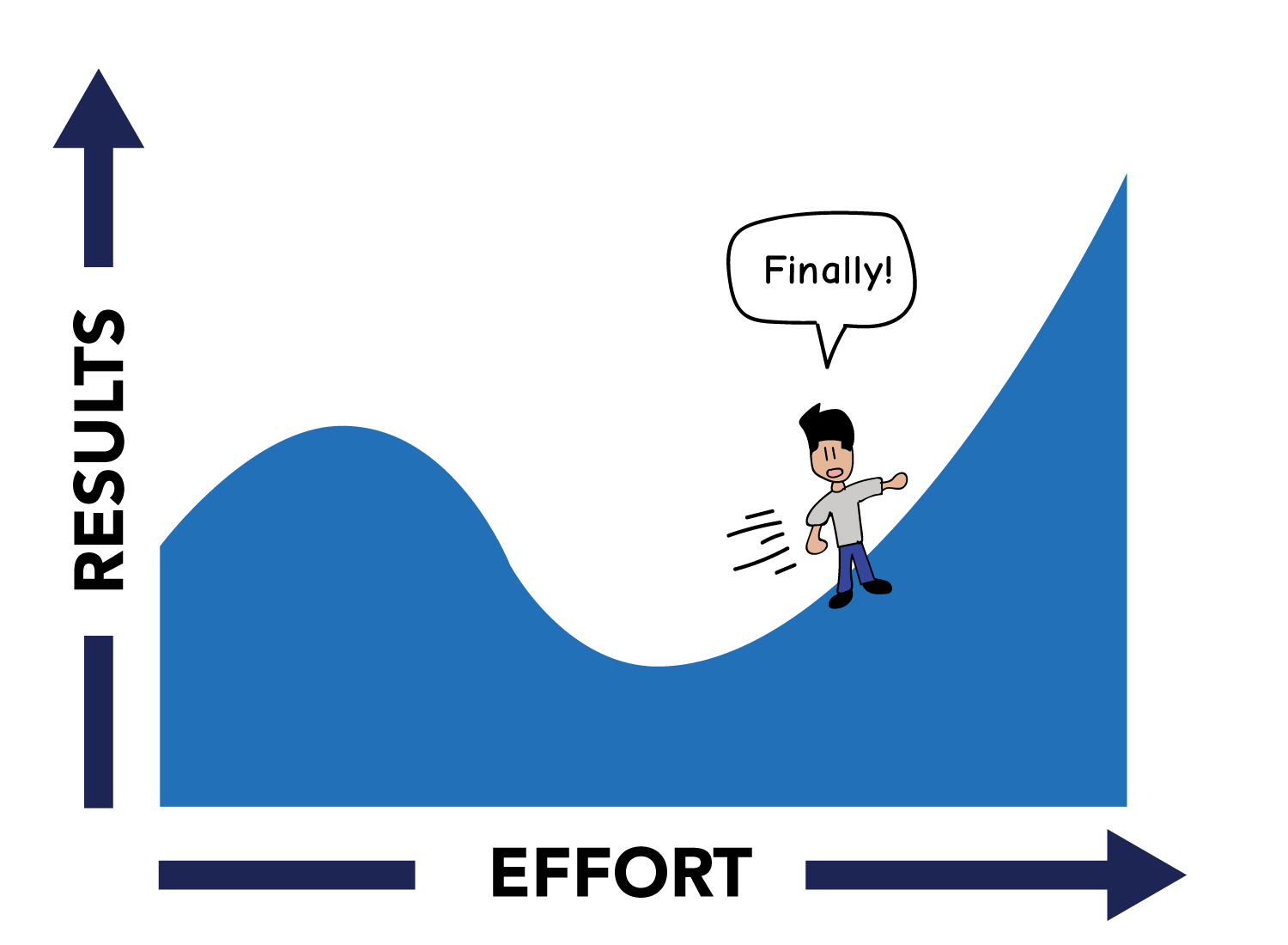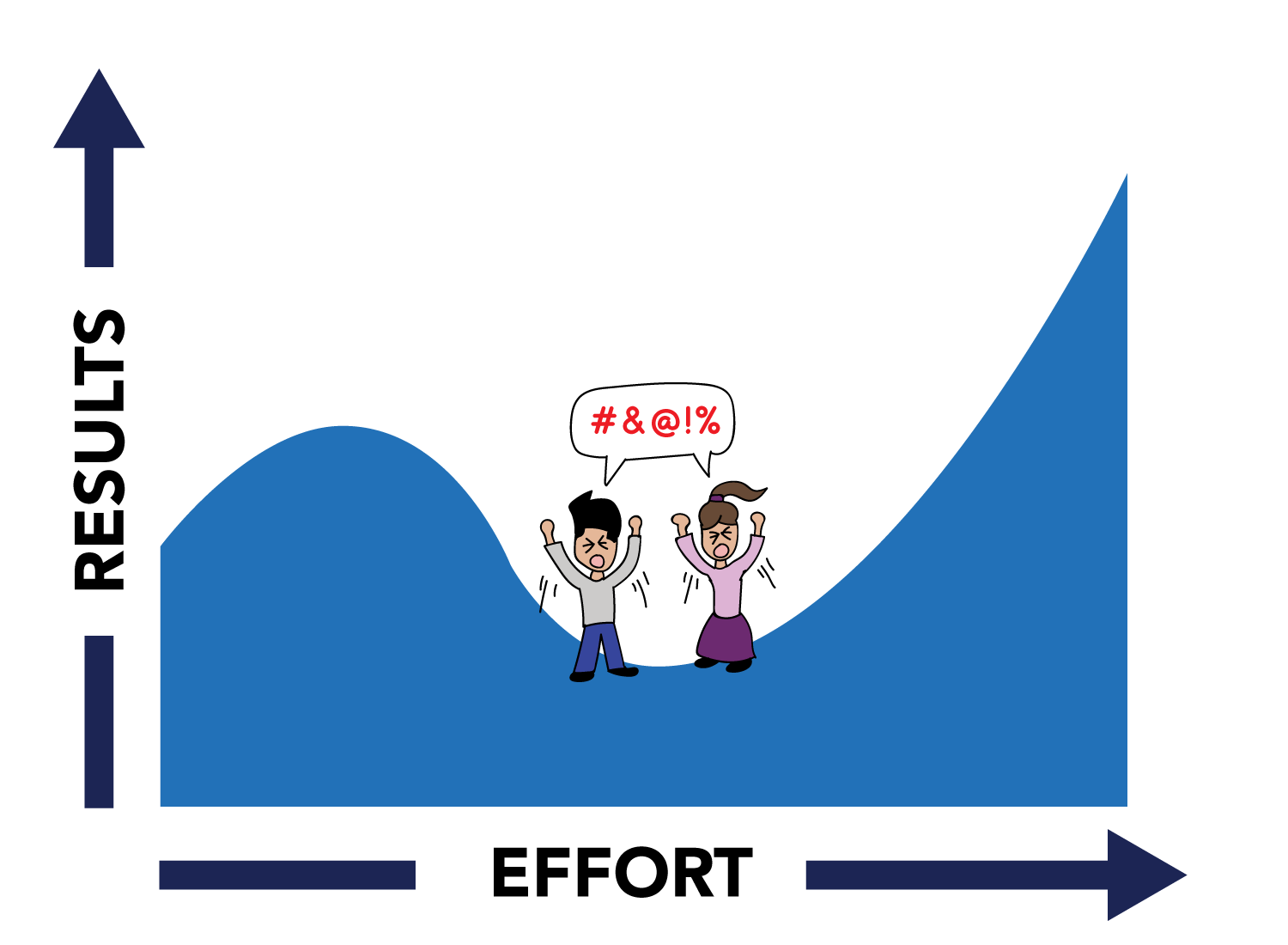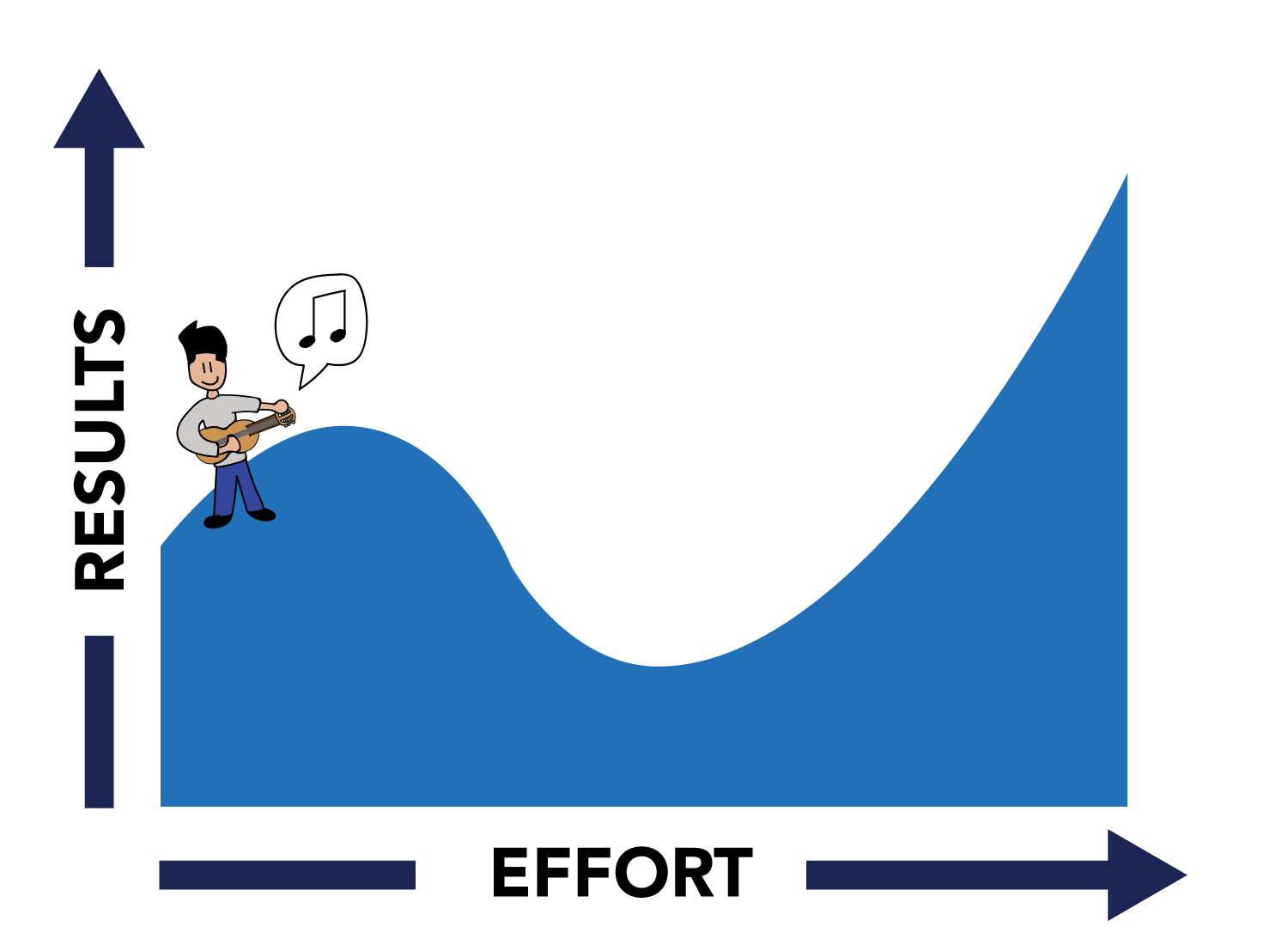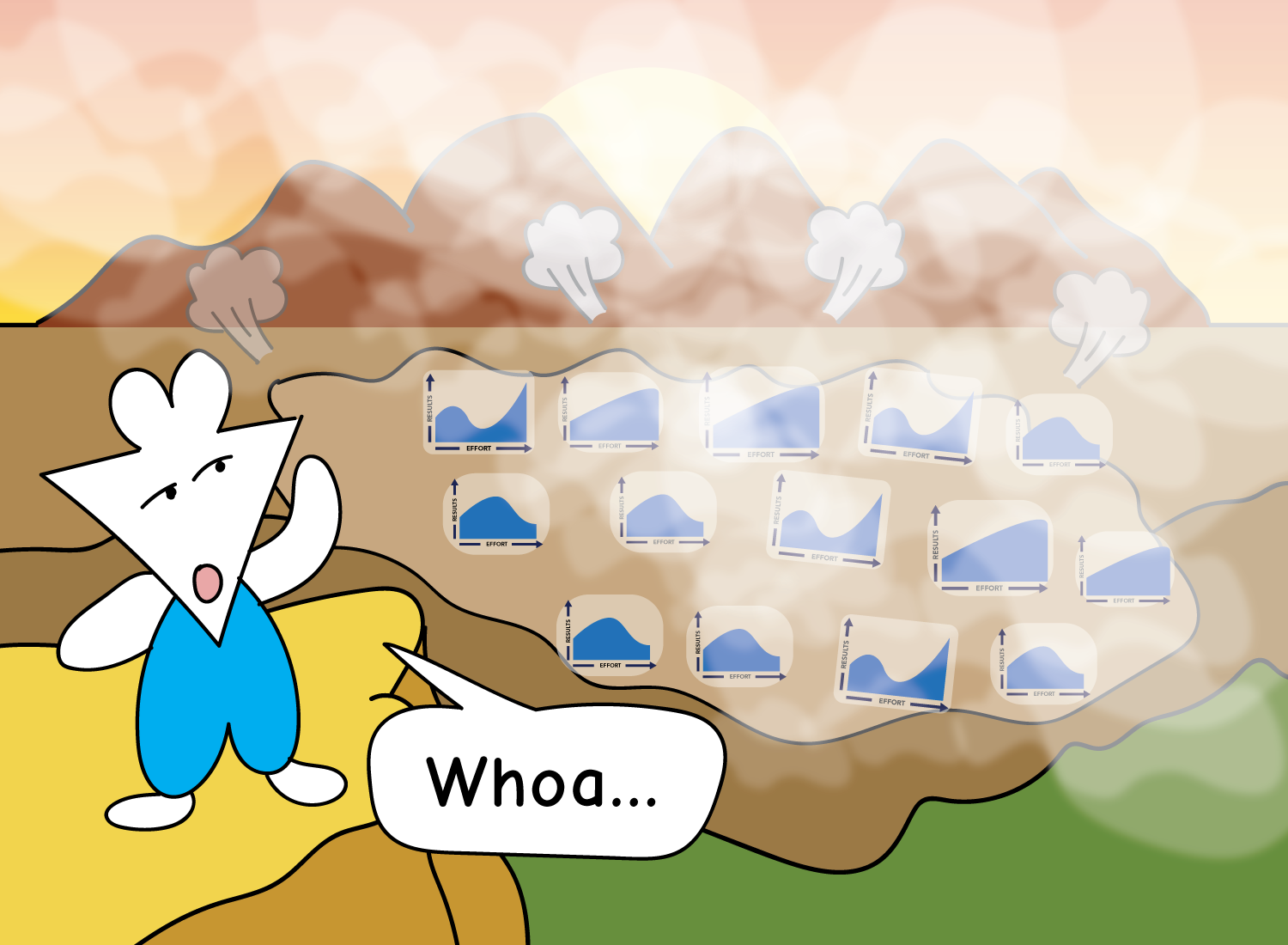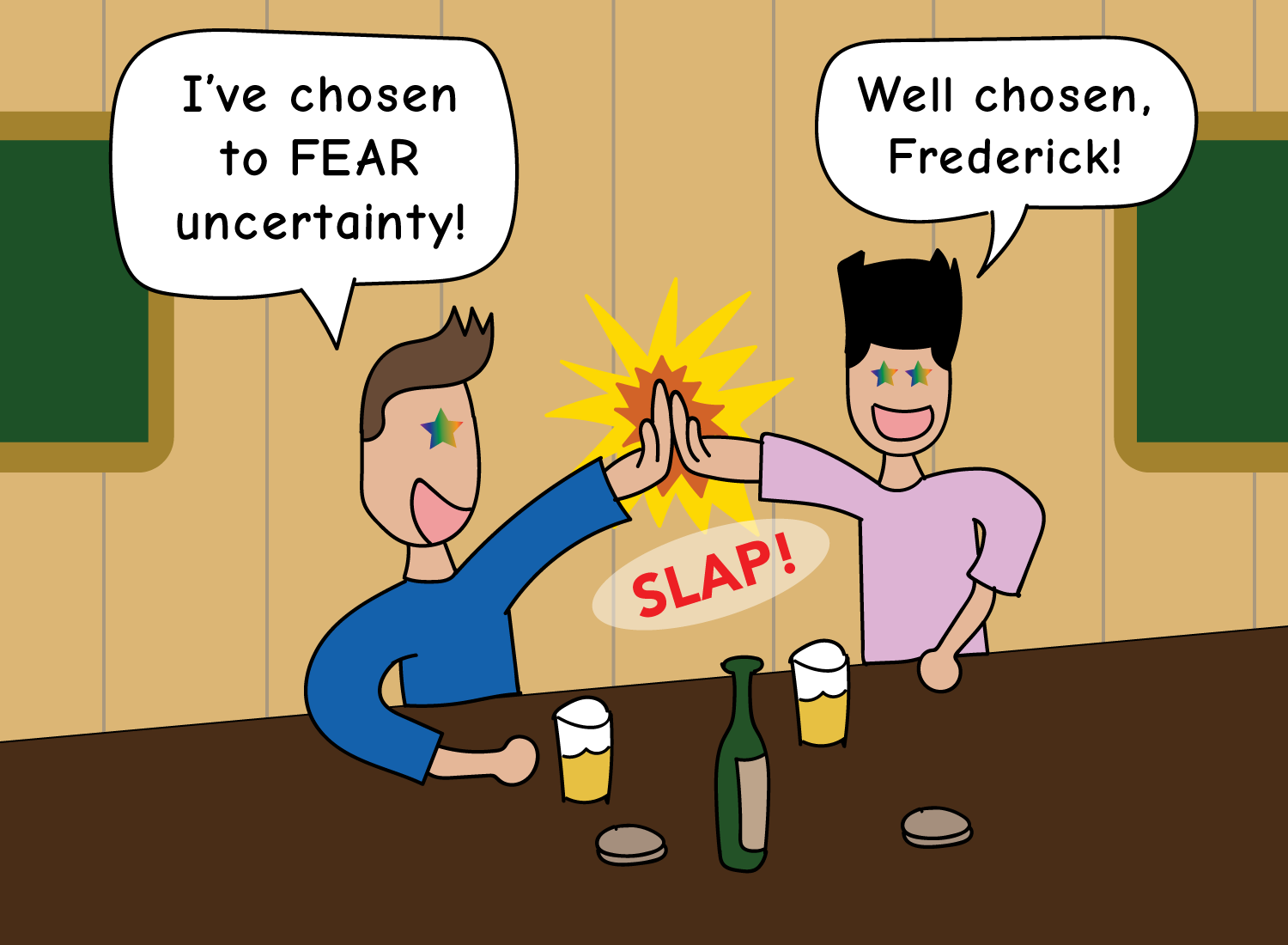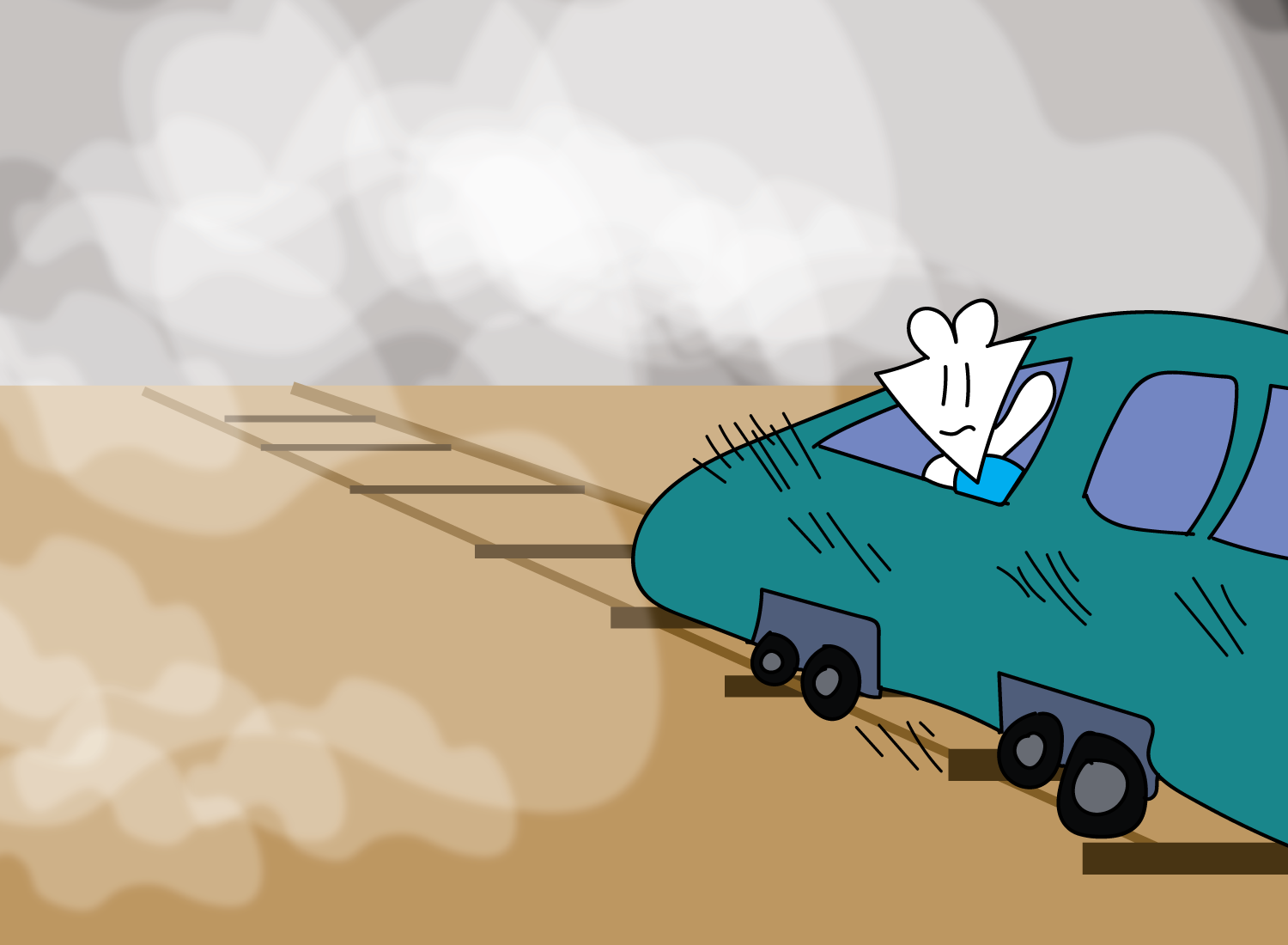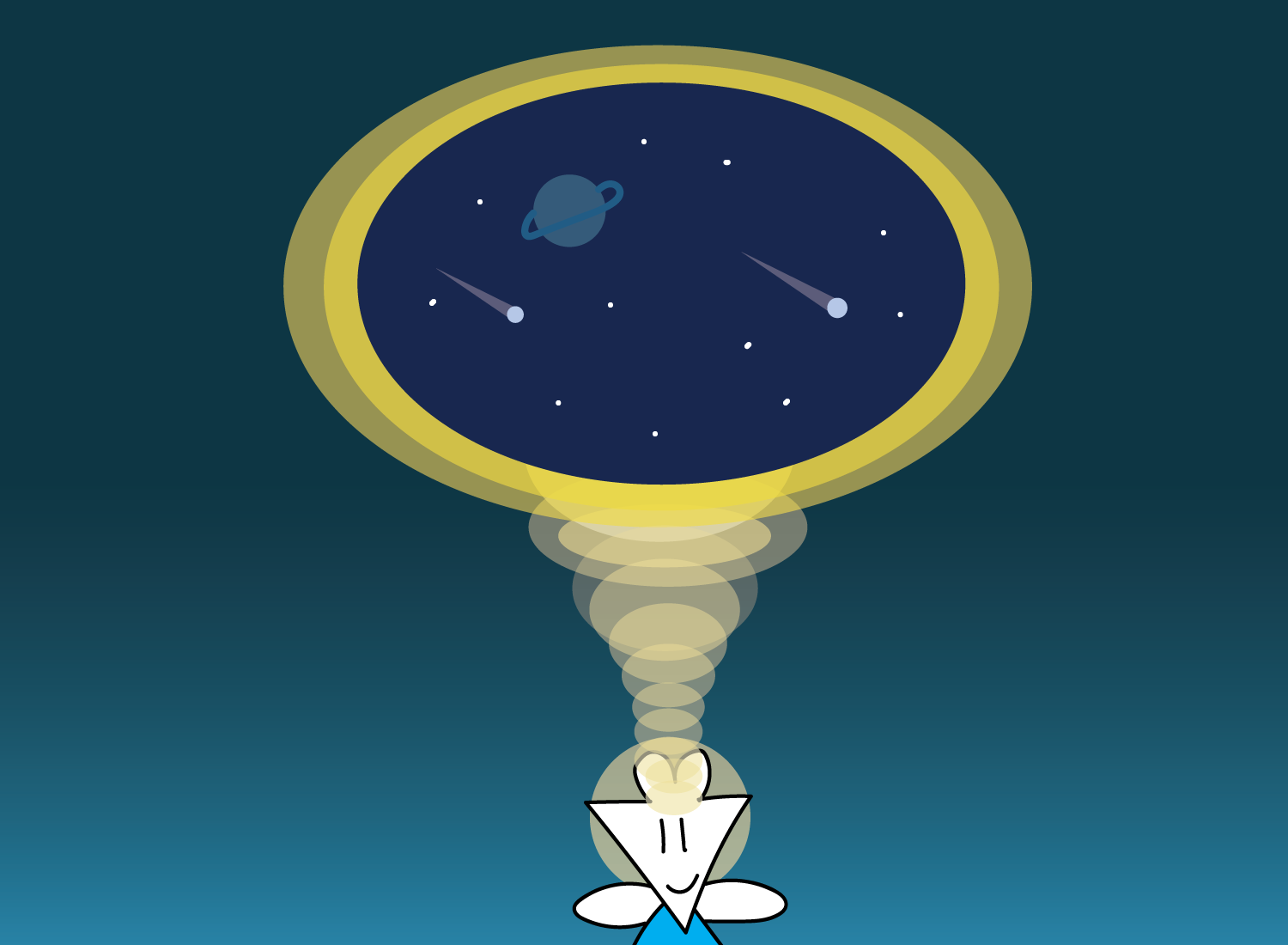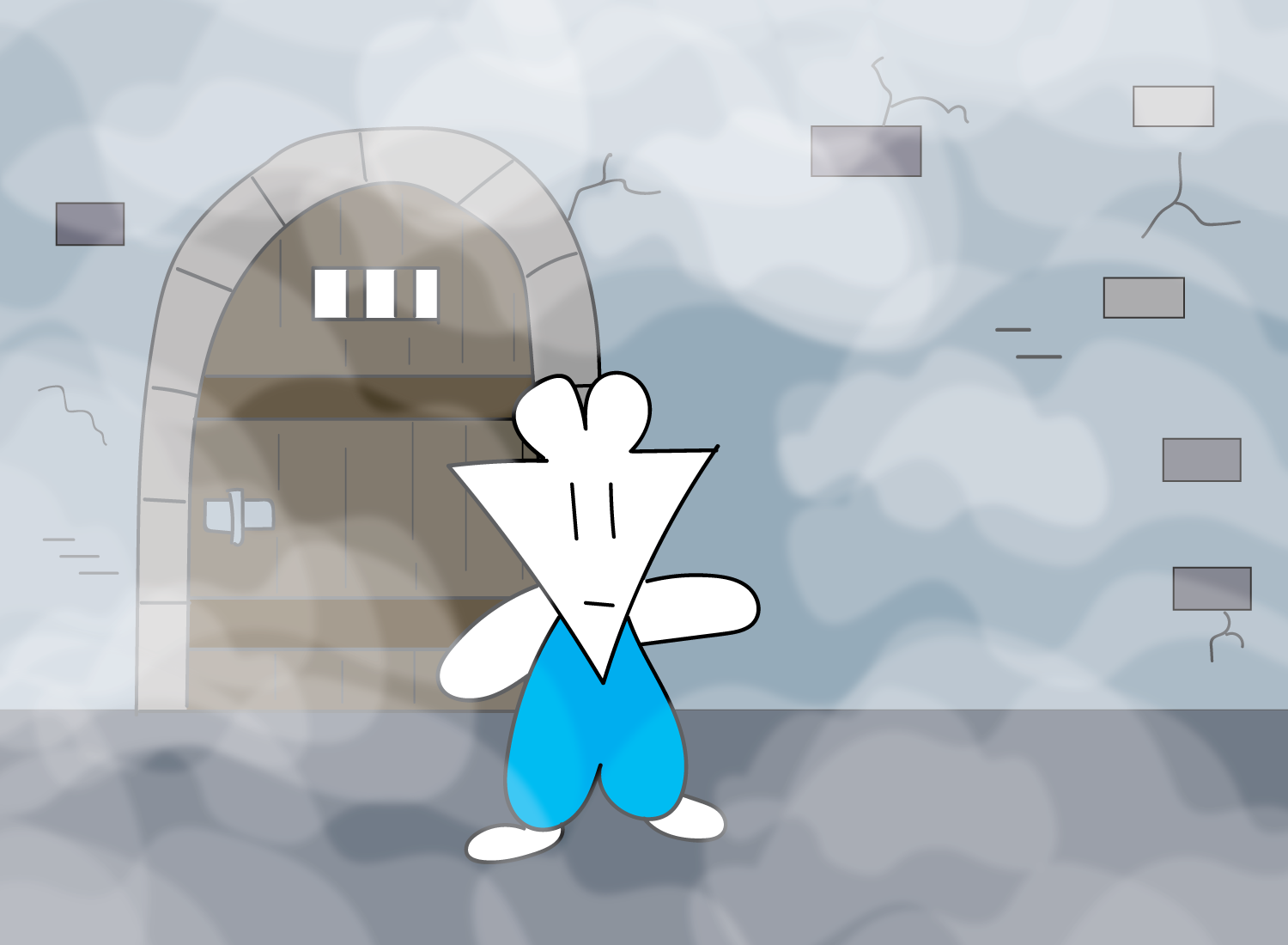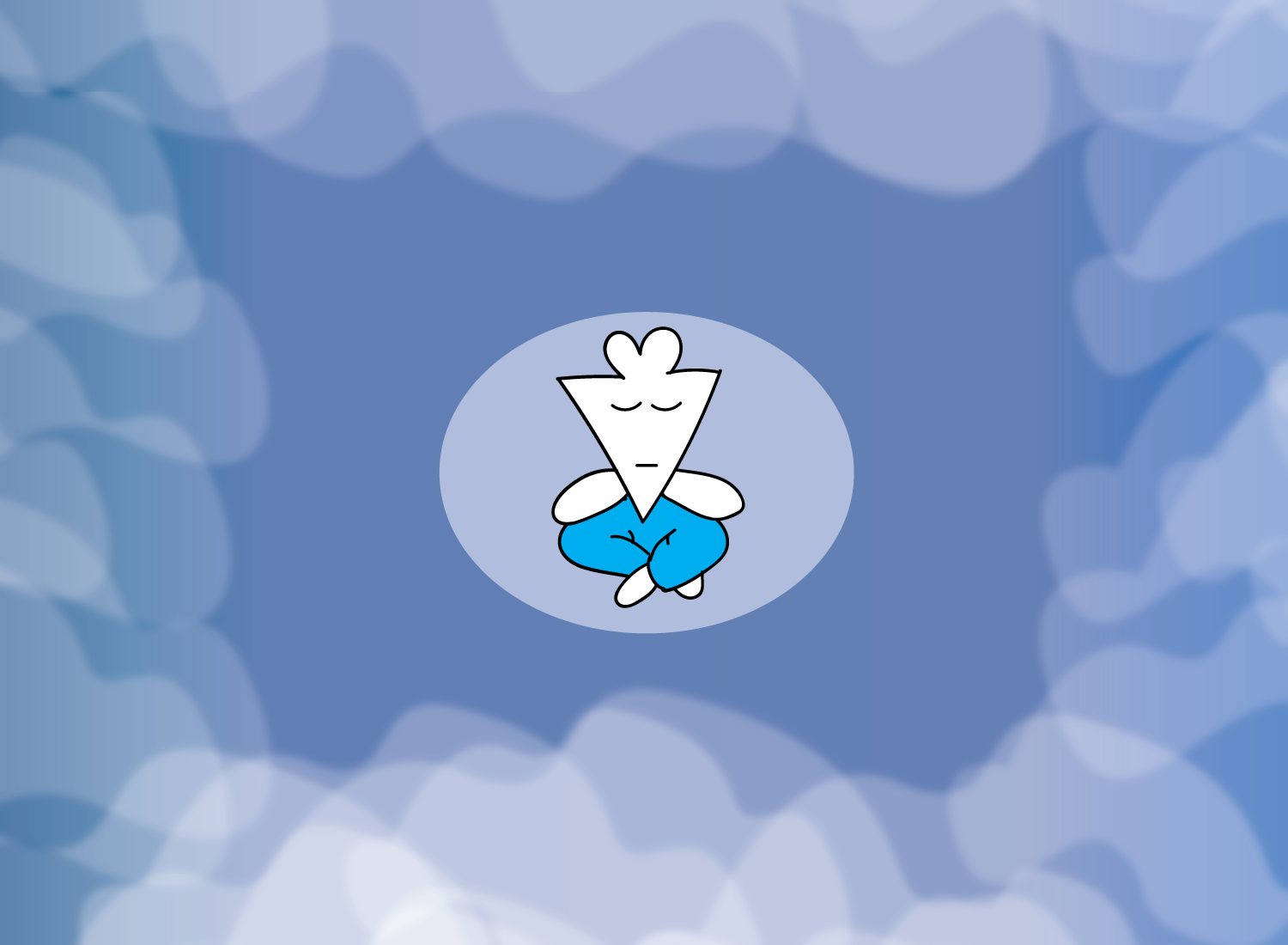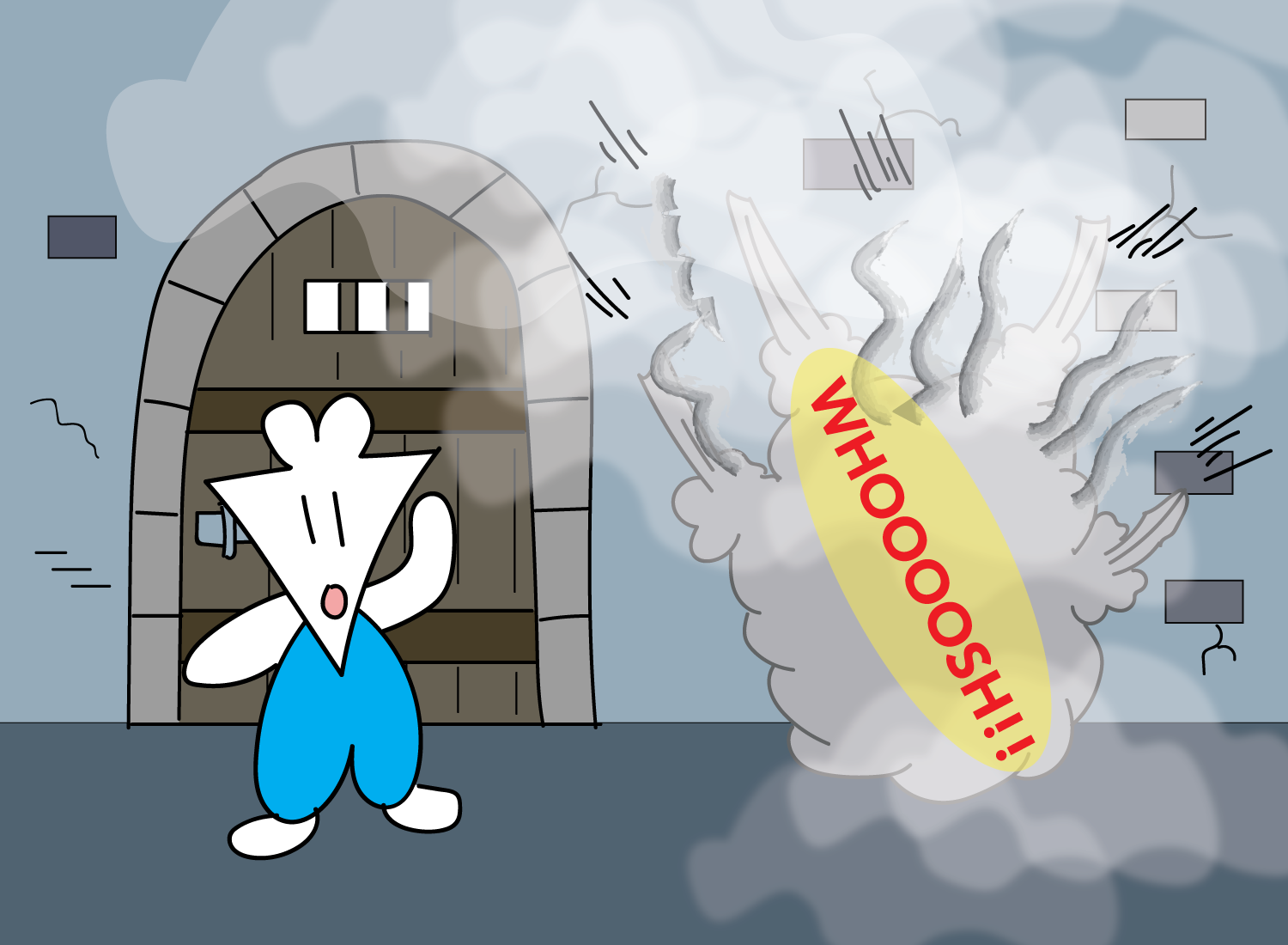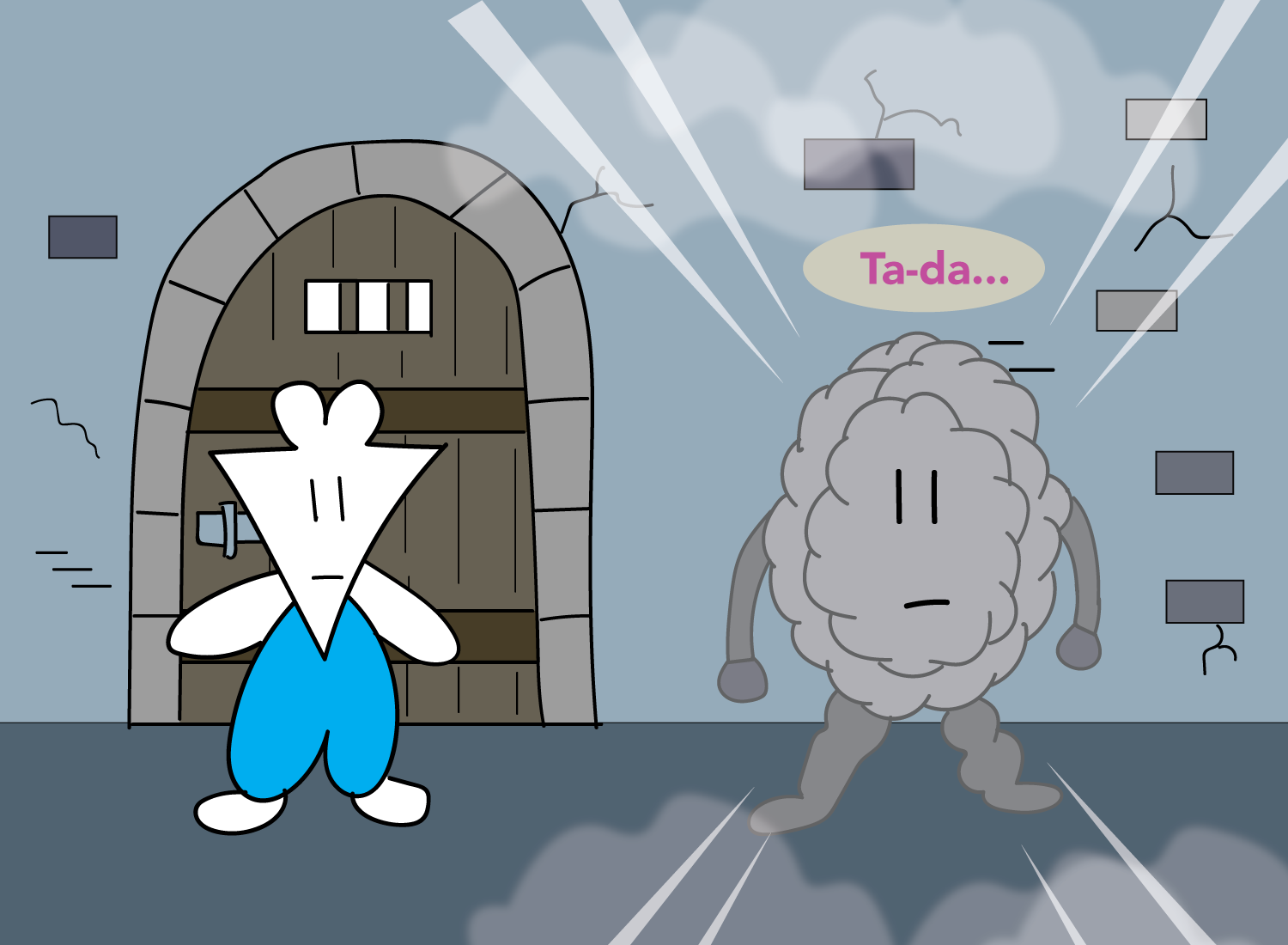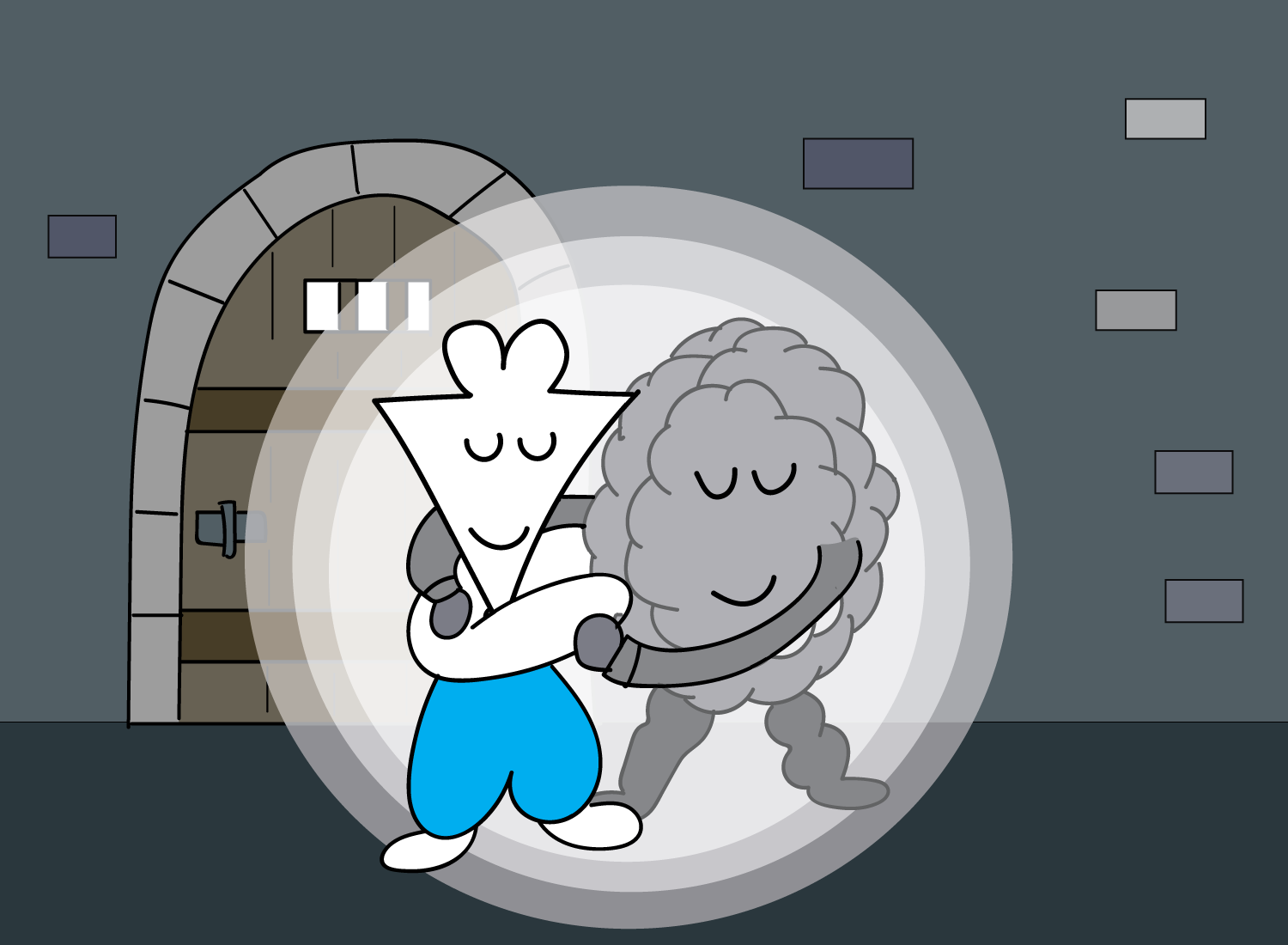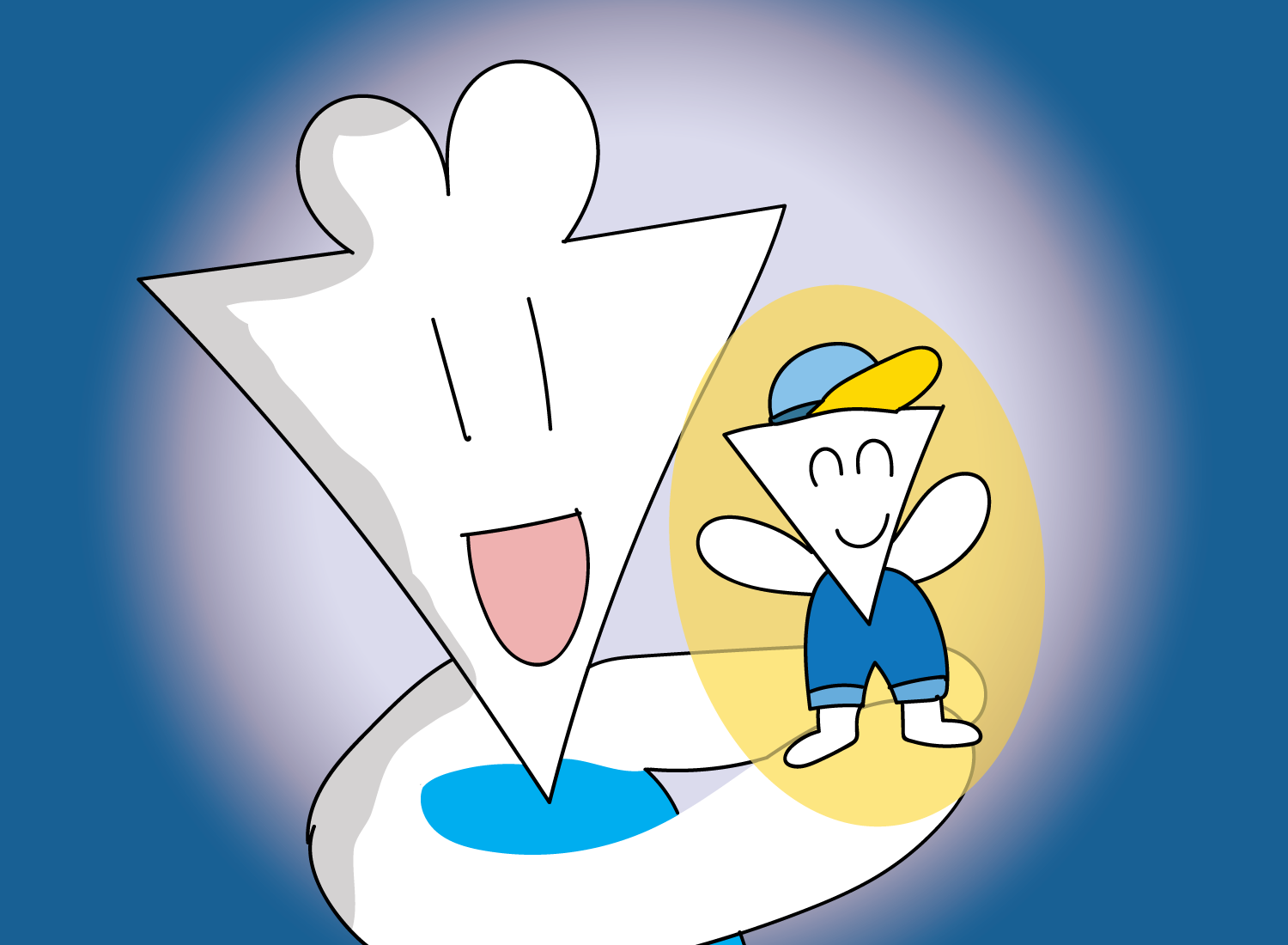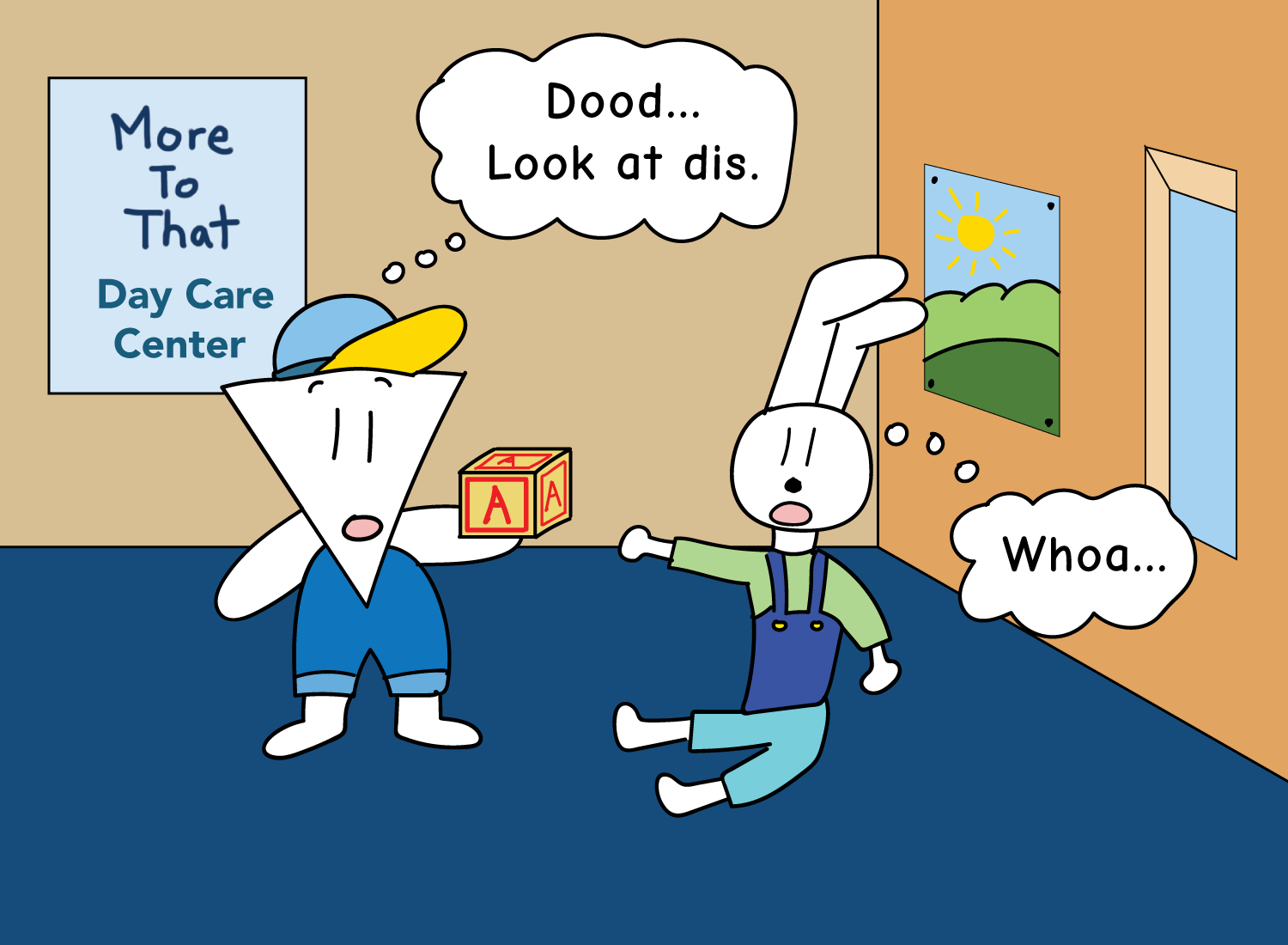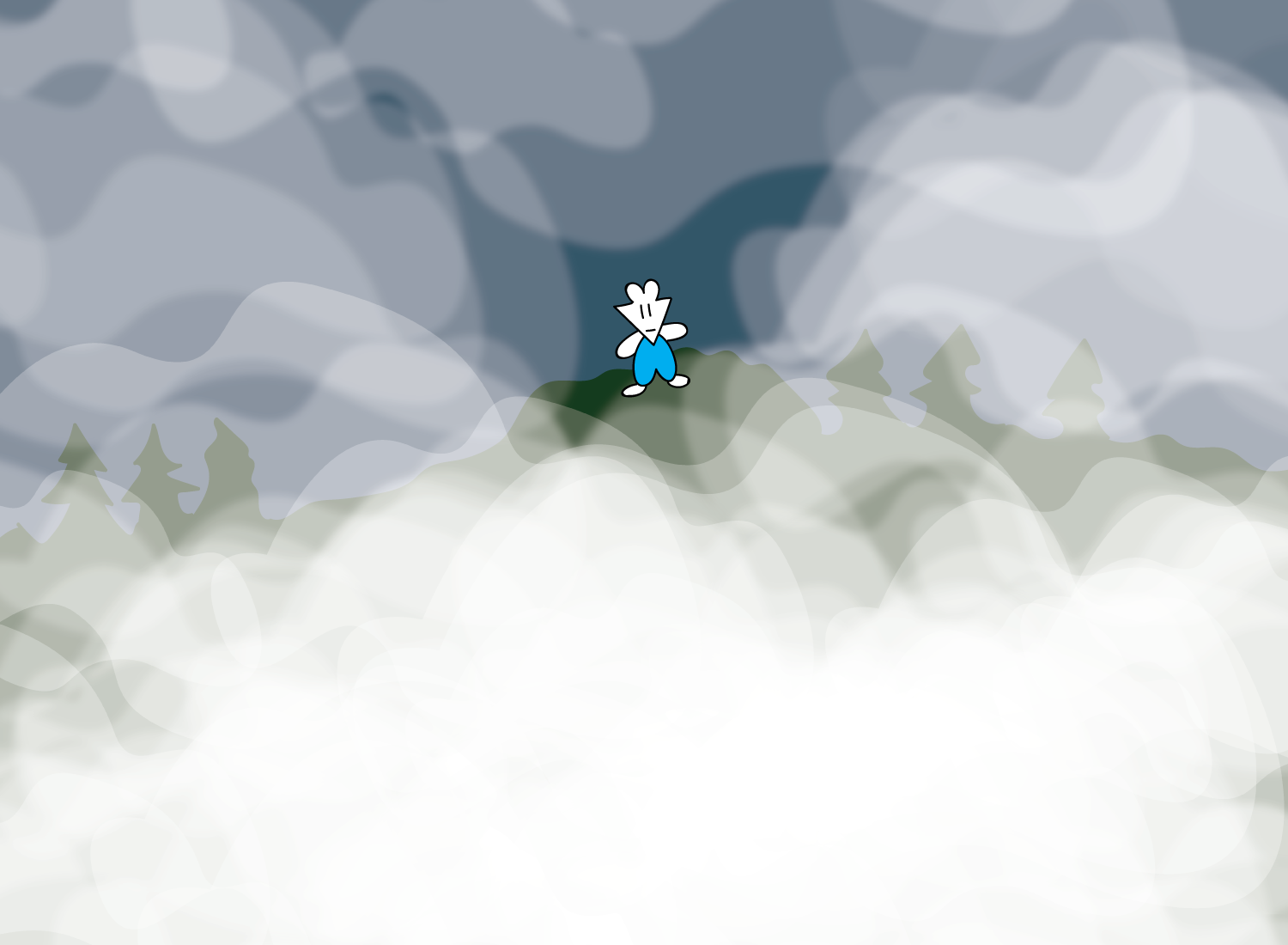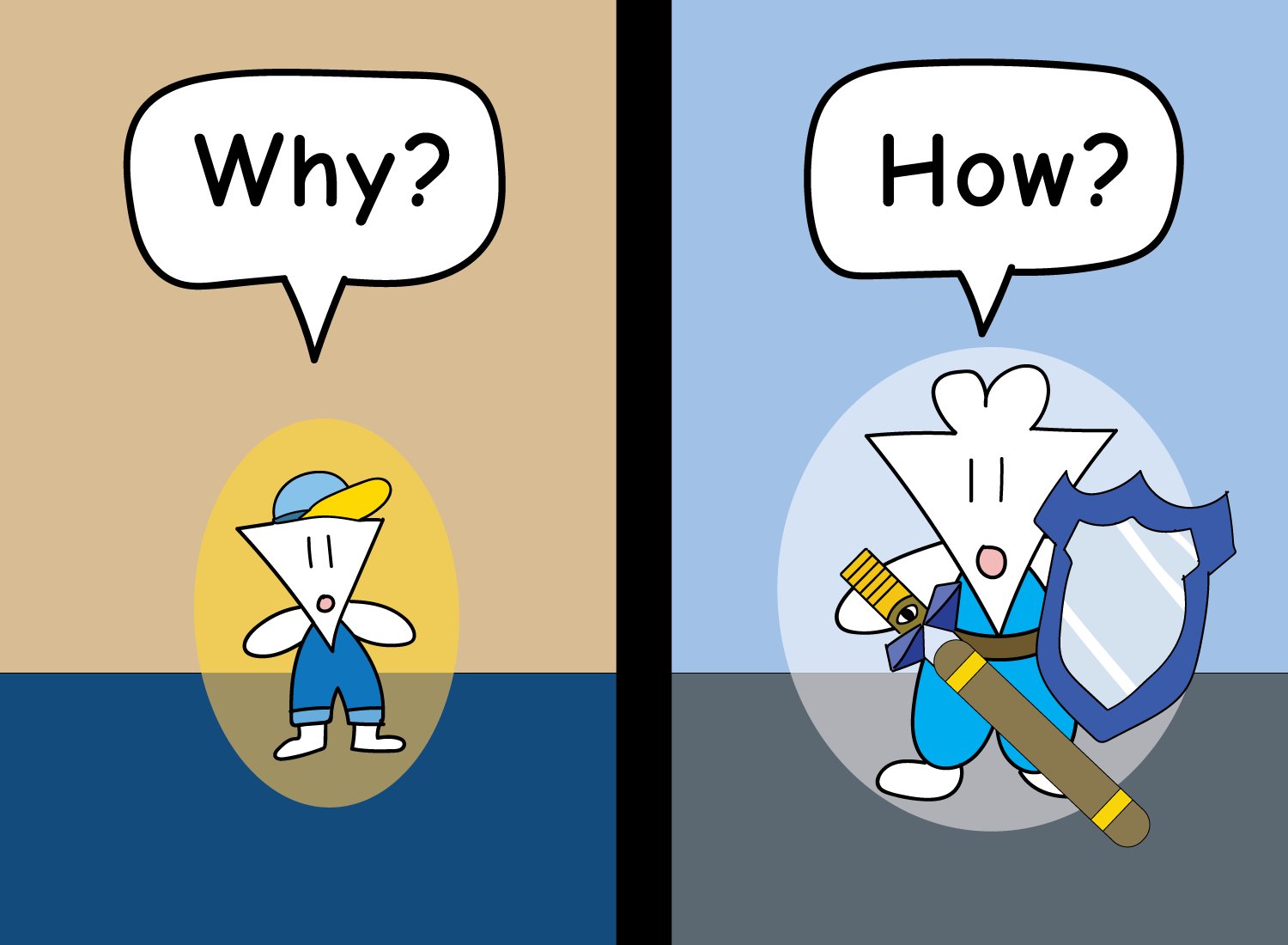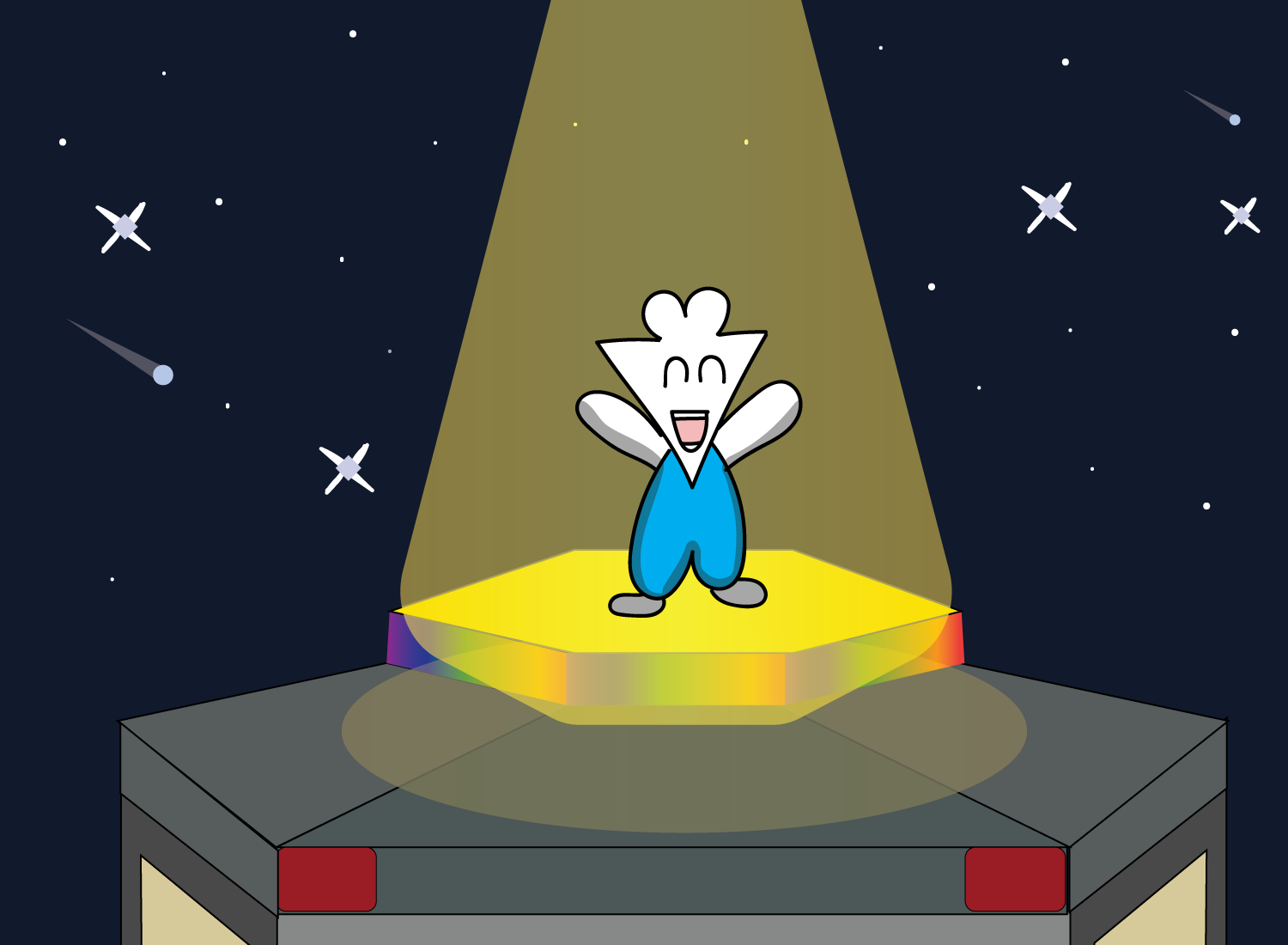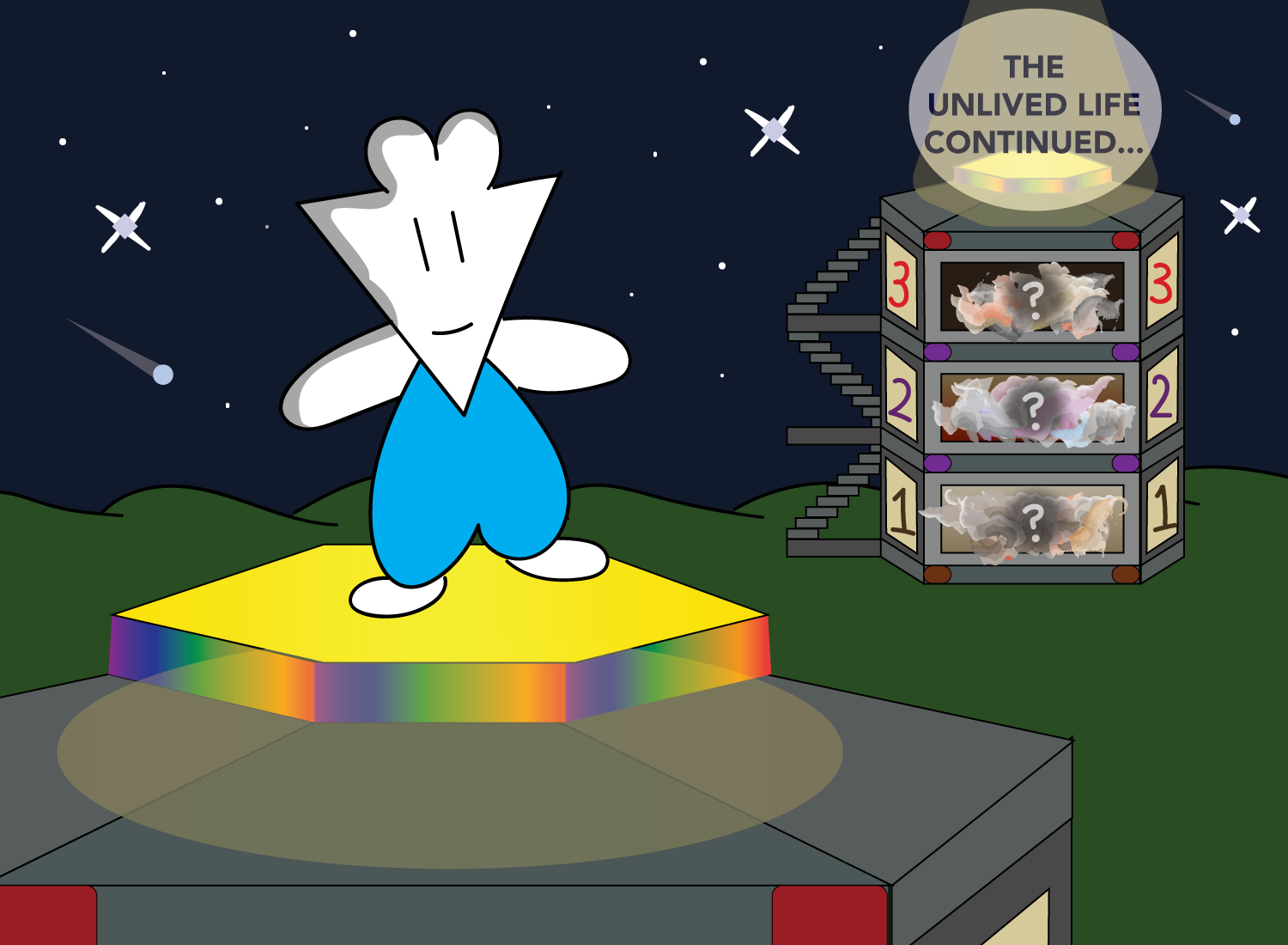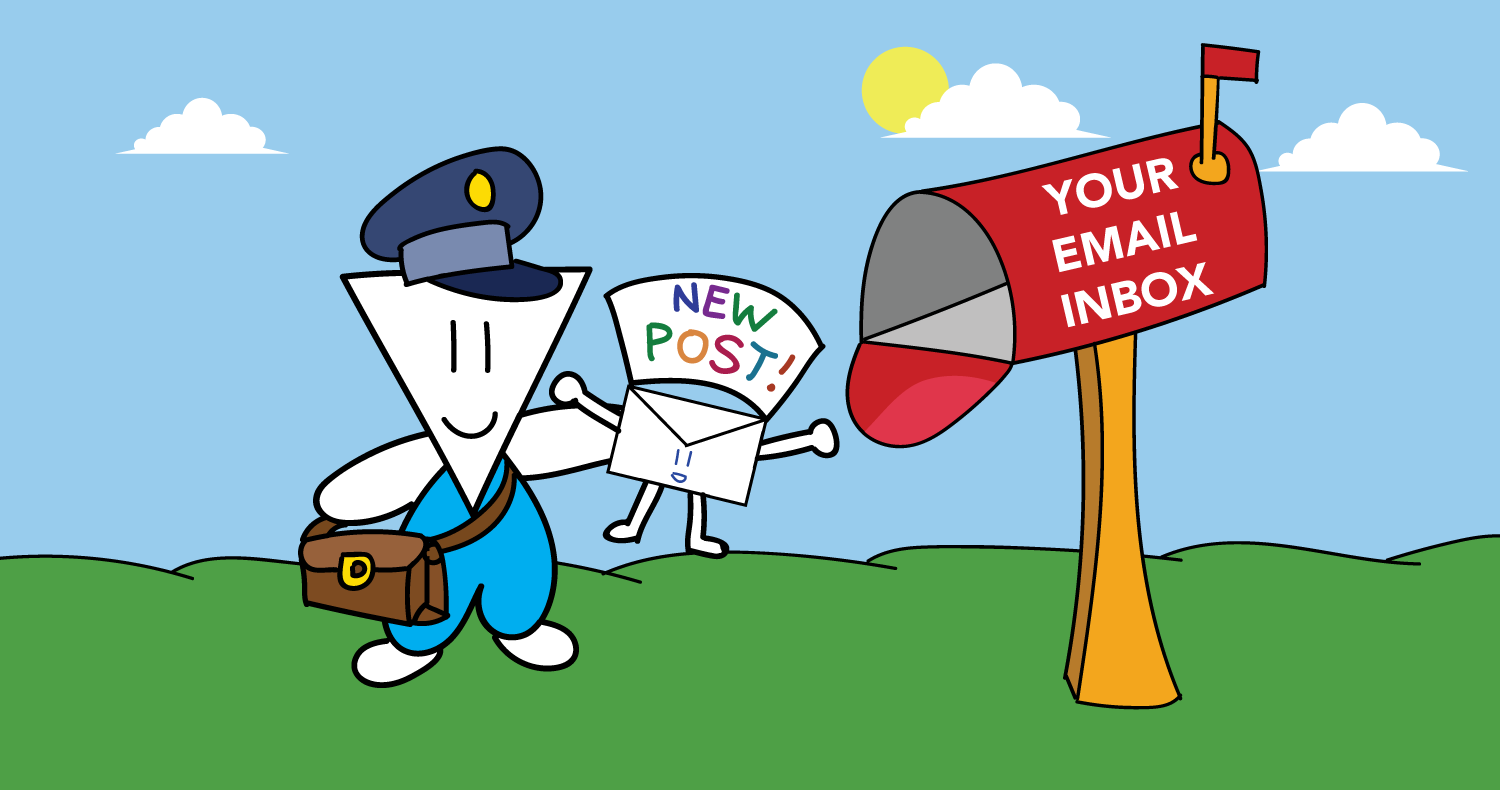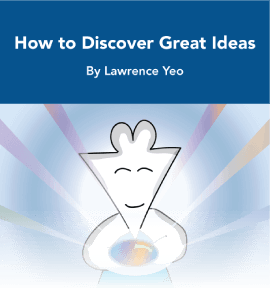The Quest to the Unlived Life
There’s a lot we can learn from playing a ton of video games.
Despite the thousands of storylines that have been created by game developers everywhere, there is a compelling formula to any game’s narrative that makes it so fun to play. Whether you’re playing something from the family-friendly Mario series or from the ridiculously-violent God of War anthology, the underlying framework of their storylines follows the same formulaic arc dating back to hero mythologies from thousands of years ago.
When you start playing any video game, you are entering the realm of the game’s creators for the very first time. You start off as a nobody — a townsman in the local village, a plumber going around fixing toilets, a simple farmer harvesting crops. You start at the ground level, with an ordinary and pretty unremarkable existence.
But then a seemingly insurmountable challenge strikes you — a challenge that seems so unfathomably complicated that you don’t even know where to begin. How the hell are you, a regular ol’ townsman, supposed to climb atop that daunting castle tower, defeat all its scary inhabitants, and slay the ultimate supervillain to become the greatest hero the world has ever seen?
Well, fortunately for you, the game’s developers are not in the business of creating unsolvable levels because that would be a really shitty thing to do. So while the developers create a universe full of difficult puzzles and problems, they also build the incremental solutions one must discover and apply to eventually beat the entire game.
The best game developers are the ones that toe this line between well-designed problems and discoverable solutions in a way that seamlessly blends the two worlds together. If they create a universe where the solutions are near impossible to find, then the game becomes infuriating and people roundhouse kick their controllers into the trash — conversely, if the solutions are too easy to find, people use the game as white noise makers to help them fall asleep at night. Both these scenarios suck, so the game’s creators do everything they can to make that balance just right.
In the last post, we explored natural selection and the faulty mechanisms it installed in our decision-making processes. Despite the superpower of rationality we were all given, we still do the things we shouldn’t do, and fail to do the things we really should do. And to make it worse, whenever we try to align our actions with our rational predictions, we must come face-to-face with what author Steven Pressfield calls Resistance — the primordial force that prevents us from doing the things in our lives that make it purposeful and meaningful.
Resistance is the mother of procrastination, the father of fear, and the deity of regret — all combined into this invisible yet ever-present force whose sole aim is to prevent us from getting anything done. And while we used the last post to identify it by name, we didn’t delve into what we can actually do to combat its power over us.
It is this very fight against Resistance that sets the stage for the most consequential video game you’ll ever play. It’s one in which you play as yourself — the protagonist is you, the enemy is Resistance, and the creator of the game is none other than natural selection itself.
The ultimate destination is the Unlived Life, or the venue in which our actions are reliably aligned with the rational outcomes we know they will bring about. This is where the superpowers of rationality and forward-thinking reign supreme, but to get here, natural selection has installed three bosses you must overcome to reach that shining beacon of light.
These levels have been designed to be very challenging and difficult, but keep in mind that natural selection has also built in the solutions and tools we can use to ultimately beat them. As we work through each level, we will gather concrete takeaways from each stage, growing our cumulative skill set as we inch closer and closer to the apex of the tower.
Contrary to most video games, the moves we make in this game can fundamentally alter and reshape the approaches we take toward the most important things in our lives. So let’s all sit down, take a deep breath, and press start on the controllers known as our minds. This journey goes pretty deep, but like all journeys, it starts with a single step into an unknown realm.
Stepping Into Level 1
When you start playing a video game with a concrete hierarchy of bosses, you always have to start at the ground level. Level 1 is an interesting place because it’s both difficult and easy — it’s difficult because we’re learning the mechanics of the game for the first time, but it’s easy because there’s an expectation that the villain will be very beatable once you get the basics down.
If the game’s creator made the Level 1 boss really difficult to overcome, it discourages the player from wanting to move forward and learn the true intricacies of the journey. So while the introductory level may seem overwhelming at first, remember that it will become easier once we take the time to learn the foundational rules and controls.
With that said, let’s introduce the inhabitant of Level 1.
It’s this inglorious character — a wall of thick, gooey sludge that has the power to drag us down and prevent us from doing anything meaningful with our time.
Say hello to the first boss:
Laziness.
Level 1: Laziness
Some might balk at the fact that this wall of sludge is the Level 1 boss.
I can already hear people saying, “Fuck, if this notoriously difficult thing is the introductory boss, how the hell am I ever going to get past Levels 2 and 3?!”
I get it — after all, Laziness is one of the most common culprits behind why we don’t get shit done. It’s the quintessential favoring of short-term gratification (napping and Netflix binges) over progress toward a meaningful goal (writing that next screenplay or building that app). It’s this invisible sludge that drags you to the floor whenever you try to pull your action lever to the proper place — simply touching it can make you fall victim to its thick and gooey texture:
However, Laziness is the introductory boss here because it’s more beatable than we think it is. We often make the misconception that Laziness is the same thing as indifference — if we don’t feel like doing something, then it must mean that the task just doesn’t mean that much to us.
But this is untrue.
There is a self-deprecating quality to the feeling of laziness that actually indicates the reverse. If you were too lazy to hit up the gym and took a nap instead, there is a feeling of regret you feel when you wake up, realizing that you missed out on yet another opportunity to improve yourself. When you choose to play ten hours of Fortnite instead of working on your portfolio, you feel this anger toward yourself for wasting all that time.
And here lies the paradox: the stronger the regret associated with that laziness, the more the endeavor actually means to you. Laziness is not indifference — instead, it’s a response to how daunting and overwhelming your goal is perceived to be.
To illustrate this particular point and how we can beat it, let’s say you want to become a musician. You decide that quitting your job and working on music full-time is what it means to live your Unlived Life, and you want to dedicate every waking moment to getting there.
There’s one problem though.
You don’t know how to make any music.
So naturally, you’ve set your goal to “learn how to make music” because that sounds like a reasonable place to start. You want to chase this dream badly, but whenever you get back home from work, you’d rather just chill out for a bit, have a drink or two, and just unwind by watching a movie instead of learning how to navigate your music production software. And this happens day in and day out, leaving you feeling like crap because you’re not making the progress you’ve always hoped to make.
Do you find yourself in this position because you really are super lazy and you just don’t care enough about your goal? I don’t think so. It’s because your goal of “learning how to make music” is really blobby and vague, and looks something like this:
The problem with this situation is not your aspiration to make music, but how daunting your goal is. Saying that you want to learn how to make music is like saying that you want to learn how to speak another language fluently — while both of those goals sound fantastic, it makes me wonder how the hell you’re going to get there.
A broadly defined goal is Laziness’ best friend, as the hugeness of it will constantly freak you out — the moment you try and tackle it, a wave of sludge will seep out and cover you, preventing you from making any active progress toward a meaningful place.
Well, fortunately for us, we have that one little superpower I mentioned earlier in the previous post: the power of rationality.
In the context of our video game, this superpower is the guiding light that gives us the necessary tools and weapons we need to progress through the game itself. It is the force that gives us treasure chests we can open once we set our intentions in the right place, and provides us with insights as to how we can beat the boss inhabiting the dungeon.
To beat Laziness, our superpower provides us with a fundamental tool — one that allows us to reshape and reframe our approach toward our initial blob of a goal.
This weapon is the Sword of Perception.
The Sword of Perception is the foundational tool we need to journey upward toward the Unlived Life. It’s the mushroom in Mario Bros., the minerals in Starcraft, the Poke Ball in Pokemon, the list goes on (my gaming years are certainly showing their age here…). It will fundamentally reshape the way we view our enemy of Resistance, and will give us the necessary perspective we need to effectively battle our way through it.
The power behind this sword is all about its ability to reframe things. We humans have the unique ability to view a certain problem, understand how to break it apart, and make changes to the way we approach it to create an optimal solution for the future.
So when we face Laziness, we need to use the sword to slice up our one large, daunting goal into smaller, more manageable mini-goals that are much easier to tackle.
Dale Carnegie talks about the concept of approaching our lives in day-tight compartments. Instead of viewing a goal as something to be reached in its sheer totality, treat each day as a compartment that has its own small aspiration attached to it. That way, the perception of learning how to make music can shift from a huge, daunting goal:
To smaller, day-tight compartments that are much easier to accomplish:
When each day is perceived as its own small chunk, goals are not only easier to achieve, but the reward of forward momentum is also given to your journey as well. If we keep in mind that Laziness is more so a result of ineffective planning rather than indifference to a goal, then we can beat it by slicing up a grandiose vision into smaller, manageable tasks of interesting to-do’s.
Of course, effective planning alone won’t get you past Laziness, but it makes it much easier to actually buckle down and do the work. Laziness is at its thickest before you start the task at hand — the dread of actually starting is what we are trying to reduce by setting smaller, bite-sized goals. When you actually start the task, Laziness is still lurking, but its power is greatly reduced. The crucial thing here is to keep going, as its lure diminishes the longer you spend time working. I imagine it to look something like this:
You see that rainbow-colored section near the middle and the end? That’s when you’ve hit the gold mine of productivity: flow state. A lot of people have different theories as to what it means to be in that state, but I think it ultimately comes down to one thing:
Laziness is absent here. It simply ceases to exist.
When you’re in flow state, it feels like “you” are not really there, and instead, there’s some mechanism (some call it The Muse, others call it a creative spirit, etc.) that temporarily takes over your mind and simply uses you as a vessel for its work. While that sounds plausible, I think being in flow state arrives when you’re finally free of the resistance brought forth by Laziness. It’s when you’re no longer questioning what time it is, how much longer you have to work before you can play, or wanting to quit because the work is too difficult.
Flow state happens closer to the end of the spectrum because that’s when you’ve fully pulled yourself out from the puddle of Resistance, and now you’re free to maximize the potential brought forth by your mind. And as a bonus, once you have successfully done your work for the day, you are met with what I call “rewarding laziness.” This is when you’re totally free to sit down, watch that TV episode, have a drink/relax, and feel great about it since you were really productive for the day.
Flow states are discussed quite incessantly in our culture — there are countless things you can read about what they are, how you can achieve them, etc. — so I’m not going to delve into it much here. The only thing I want to add is that flow states can only happen when you’re engaged with a task for a focused and prolonged period of time.
Setting up productive environments by clearing out distractions, temporarily blocking access to social media, putting your phone on Airplane Mode, etc. are good ways to lessen Laziness’ ability to reach out and suck you back in. If you can set up routines that help to construct these environments consistently, that will increase your chances of reaching flow state on a regular basis, allowing you to achieve each goal more effectively.
When this type of dedication is combined with consistency, something interesting starts to happen. Momentum starts to build, and cool things happen in the form of results. Your two decision-making levers are finally aligned in the right direction, as your actions are aligned with the vision you have for a more meaningful life. Your music starts getting better, your writing reaches more people, your jokes on stage hit more often — the momentum continues to move in the right direction.
But lurking around the corner is another force trying to pull your action lever back down again. In fact, it was always there, but it was temporarily masked by the excitement you had while embarking on this newfound endeavor. But as your work grows in its consistency, it starts to become a part of your normal routine (or in More To That speak, it becomes a part of your Box of Daily Experience). And the more time you invest in it, the more your expectations grow. And the more your expectations grow…
The more disheartening it is when the results don’t follow.
It is at this precise moment when the lurking force becomes strikingly visible. It will make you question if your work will ever be good enough, or if you are worthy of even attempting such a grandiose endeavor. It will laugh in your face, call you an imposter, and try to convince you that all your efforts will ultimately end in a pile of sad, worthless ashes.
Yup. Things have gone up a notch.
Welcome to Level 2.
Level 2: Self-Doubt
The more scared we are of a work or calling, the more sure we can be that we have to do it.
-Steven Pressfield
When we first start making progress toward something, the results seem grandiose in nature. Going from zero to one feels like a pretty huge step — the thought that you created something in a space where you previously knew nothing is an exciting phenomenon, and that result is very alluring.
While these initial results are great, they do have the tendency to produce some blind spots in our thinking. When we become caught up in the excitement of our initial results, we tend to think that we have it mostly figured out, as the path from novice to amateur is a relatively short one:
Since the topic at hand is engaging and interesting, you feel like the results will continue to pile up, as the forward momentum of your curiosity will be enough to take you to mastery. However, as you continue investing time and effort into your endeavor, you notice that things aren’t as easy as you thought they’d be.
The indicator of an early success may have been to get your first song created, your first screenplay finished, or the prototype of your first app built. When that initial goal is reached, you have a positive result, but whether you are conscious of it or not, your definition of achievement will increase in difficulty as well.
The next step may be to get your song heard by a thousand people, have your screenplay picked up by an agent, or get a thousand people using your app. These are considerably harder results to achieve, and take much more time and effort to reach. So you work harder to make it happen, but at the end of the day, you find that your song is only heard by twenty people (most of them your friends), your screenplay is ignored by mostly everybody, and your siblings are the only registered users of your app.
And pretty soon, it strikes you that in reality, this shit is really, really hard.
Entrepreneur and author Seth Godin calls this downward curve The Dip, and if your endeavor is worth doing, it is most certainly controlled by it.
The Dip is where we spend the excruciatingly long hours toiling away at our work, trying to improve the quality of our craft even if the results aren’t there to motivate us. It is the mechanism that weeds out the people that only want the benefits associated with the result rather than actually doing the difficult work to get there. In Seth Godin’s words:
“The Dip is the long slog between starting and mastery.”
The Dip has many aliases (the trough of sorrow, the valley of despair, etc.), and it is everywhere. It exists in the pursuit of creative art forms, entrepreneurial ventures, fitness and health, education, marriage — pretty much anything requiring significant time and effort for something worthwhile.
And it also happens to be the home for the inhabitant of Level 2:
That thing known as Self-Doubt.
When we were moving from our position as a novice to that of an amateur, Self-Doubt wasn’t very present through most of it. Our excitement to learn something new, combined with good feedback we were getting from our peers, allowed us to move forward without much hesitation — we were just happy to routinely beat Laziness in our pursuit of knowledge.
However, when the results of our efforts inevitably begin to underperform our expectations, a kernel of Self-Doubt pops into frame:
And when the album you spent months on goes unnoticed or that mural you tirelessly painted gets no love, the seed snowballs down The Dip, rapidly gaining steam and growing larger with every passing moment.
And before you know it, Self-Doubt has become this behemoth of a monster, roaring at you every time you get ready to write another word, record another note, or head on over to the gym.
If not managed properly, Self-Doubt can be an absolute hurricane of negative emotion, preventing us from putting in the necessary effort we need to push through The Dip.
Unlike Laziness, Self-Doubt makes things personal. It makes you believe that you are uniquely unqualified to do the work you want to do. It tells you that no matter what, you will fail because you just don’t have what it takes to do anything fruitful. It tells you that time and effort are meaningless in your circumstance — it may have worked for others, but you are so uniquely underwhelming that you should just forget about it.
The thing about Self-Doubt is that on its surface, a lot of its points might make sense to you. You may find yourself nodding along with some of the deprecating things it tells you, and that may sway you to believe that it’s just best for you to stop all progress and give up immediately.
Well, here’s the thing about Self-Doubt: it’s essentially just a one-dimensional troll with severely limited intelligence. It only has the capacity to spit out insults that a really annoying first-grader can think of, and none of it is really tailored to the specific individual in question:
If you took the contents of your Self-Doubt, dumped them into another person, and had that person say the things it says to you, your first instinct would be to say, “This guy is fucking crazy.” Then you would proceed to walk away and ignore it as you go about your day.
But because it resides in the contents of your mind, it becomes easier to give it some form of credence and validity. Since it exists inside rather than outside of your consciousness, the volume of its roar is that much louder, and therefore feels that much more real.
The crucial thing to remember, however, is that Self-Doubt just isn’t that smart. It always says the same things, rears its head in predictable moments, and is an attention whore that really has no substance to its character. So if it really is this dumb troll just blurting out things, how the hell did it end up in our minds, which are equipped with the superpowers of rationality, intelligence, and imagination?
Instead of focusing on what Self-Doubt is saying, we need to instead look into why it even exists in the first place. Using the Sword of Perception, we need to cut through the fog of noise that Self-Doubt is spewing, as its chatter is the mechanism it uses to cloud our rationality.
Once we get past the “You aren’t good enough” and the “You’ll never make it” talk, we are just left with the great troll itself, silently looking into our eyes as we carefully study its features in return. And what you will see is surprising — almost heart-warming, in fact.
Underneath the rough texture of Self-Doubt’s immediate appearance, you will notice that its skin is made up of everything you’ve once loved, everything you once cared deeply about, and everything you’ve also failed at as well. It’s a collage of everything that once mattered in the past and what matters to you now, and it’s woven so deeply into the fabric of Self-Doubt’s being.
What you then begin to understand is that Self-Doubt is the mind’s crude way of protecting you against hurt, rejection, and failure. It is a mechanism installed by natural selection to prevent ostracization from your community — which, in 50,000 BC, may have actually killed you, but today, it just means that things can be slightly awkward for a short period of time. Self-Doubt doesn’t like discomfort, and it doesn’t like results that inevitably raise expectations. It believes that when we start putting a lot of effort into things, we are just lifting ourselves further and further up a cliff that can lead to a more disastrous fall.
But as I said earlier, Self-Doubt isn’t very intelligent — all it knows is that when you feel some discomfort, it will automatically spew threats to push you away. By itself, Self-Doubt is a completely reactive phenomenon, and does not have the ability to understand its own nature. It doesn’t realize that its very existence hinges upon the fact that you care so much about the endeavor in question — if you were indifferent toward a cause, it simply would not appear.
So the important thing here is to provide a mechanism in which Self-Doubt can study its own character. If Self-Doubt were only able to see that it is, in fact, made up of the very thing that it is telling you to doubt, then it will have an identity crisis and can quickly turn into an ally.
Well, fortunately for us, we’re on Level 2, and our superpower of rationality is still on our side. And since we’re on a new level, it has a new tool to offer us:
The Shield of Reflection.
This shield is simple, but its sheer simplicity is what gives it its power. The only thing it has is a mirror, but this mirror is a powerful tool we can use to fight off the negative charisma of Self-Doubt.
When you lift the shield to Self-Doubt’s face and allow it to see itself for the first time, something interesting happens. It will begin to understand that the only reason it exists is because of the meaningful progress you’ve made in your life. It will see that its body is made up of all the time, the love, and the effort you put into pursuing your endeavor.
It sees the scars on its torso from the hundreds of gigs you played with only five people in the crowd, or from the days and weeks you spent on that blog post that no one read, or from the endless string of rejections you received while pitching your company.
It will see why it roared out in agony whenever you tried to press onward — after all, it was only trying to protect you from further disappointment.
However, when the Shield of Reflection is used properly, our relationship with it can begin to change. Instead of viewing it as an enemy to fight, it can be a guiding force that motivates us to progress further. In the words of Steven Pressfield:
“Self-doubt can be an ally. This is because it serves as an indicator of aspiration. It reflects love, love of something we dream of doing, and desire, desire to do it. If you find yourself asking yourself (and your friends), ‘Am I really a writer? Am I really an artist?’ chances are you are.”
If Self-Doubt is indeed a reflection of love, it’s important to be mindful of its size during various stages of your journey. Generally speaking, the larger Self-Doubt is, the more you know that you have to press forward. Its looming presence is a clear indicator that you are currently in The Dip — that lull in which the results you’re seeing just aren’t matching up with your efforts. But when it’s at its largest, it is generally at the lowest point of the curve, which means that you’re closer and closer to getting out of it. On the other side of The Dip is where true mastery lives, and that’s the ultimate goal for those that want to be awesome at what they do.
Conversely, if Self-Doubt is tiny, or if it fails to exist at all, then that’s a good indicator that this endeavor just isn’t that important to you. Seth Godin argues that if you’re going to quit something, the best time to do so is before you start considering the project seriously. In other words, if you’re going to quit, do so before The Dip even starts to form. This is what he calls strategic quitting, where leaving now will free you up to do the thing you’re actually willing to fight through The Dip for.
The worst possible time to quit, on the other hand, is when you’re right in the middle of The Dip, or when Self-Doubt is at its largest. You’ve already given it your best shot, wasted a lot of resources, and put so much energy into it… only for you to stop just short of the true benefits that are brought forth from your efforts. Granted, there are certain scenarios where quitting in The Dip may be sensical (beware of the sunk cost fallacy), but for the most part, people that quit in The Dip often do so because they are either panicking or are doing so reactively. From Godin:
“When the pressure is greatest to compromise, to drop out, or to settle, your desire to quit should be at its lowest. The decision to quit is often made in the moment. But that’s exactly the wrong time to make such a critical decision.”
When Self-Doubt becomes an ally, it can act as a good guide of when you need to press forward, and when you should not. Evaluating its presence throughout your journey is critical to understand your relationship with the endeavor, and it’s important to remind yourself that it ultimately is a reflection of love. Just remember that it’s not the harsh noises Self-Doubt makes that deserves our attention; rather, its mere existence is what does.
This conversion of Self-Doubt into an ally is when you know you’re ready to move on from Level 2. This doesn’t mean that you’ll never be here again, but it does mean that you’ve had the chance to reframe it in a way that is conducive to your journey instead of one that is paralyzing. It’s like learning how to meditate (or any other beneficial practice) for the first time — if you recognize the benefits of it, you can turn it into a habit, but surely, there will be many moments where you falter or lag behind. But that’s okay because you can jump back on the wagon at any time since the initial point of contact has already been made.
The same thing applies to our relationship with Self-Doubt. Sometimes its speech could get out of hand and you may start paying too much attention to what it’s saying — fortunately for you though, you have experience on your side now. You’ve beaten Level 2 already, so you know how to cut through the noise and use the Shield of Reflection on Self-Doubt so it could inspect itself once again. And the more you’re mindful of this, the less you have to revisit this level again.
So if you’ve been able to skillfully chop up Laziness into bite-sized goals and convert the troll of Self-Doubt into an ally, what more is there? As you traverse past The Dip and into the space where the results of your endeavor are matching up with your efforts, doesn’t that mean you’re golden?
Well, if things kept going in this direction forever, there wouldn’t be any need for this post — matter of fact, there would be no need for any other literature, form of entertainment, commentary, work, etc. about the nature of the human struggle. And last I checked, that’s still the central topic of pretty much everything in our existence, so there’s certainly another level here.
But the actual texture of what lives in the next level is hazy and amorphous. It lacks a concrete form, but we all agree that it is universally present in our lives. And it is this very haziness that makes it the most difficult level to parse through, but one in which we all find ourselves, regardless of who we are.
It’s invisible in nature, but we are certainly aware of its grasp.
Welcome to the final level of this game.
Level 3: Uncertainty
Revealing that the final level of this game is Uncertainty can be a bit of a let-down. After all, it’s a prominent feature of the first two levels as well, so it doesn’t seem like anything new.
Laziness is a response to the uncertainty surrounding whether or not something is even worth your time, and Self-Doubt exists because we are uncertain of our own capability to produce meaningful results.
While this may make sense, it only does because we are really, really zoomed in on things right now. So far, we’ve been viewing our journey up the tower in the form of a singular endeavor — whether it’s your quest to become a musician, a small business owner, a writer, a public speaker, whatever it may be. And the first two levels of Laziness and Self-Doubt were adversaries you had to overcome on your path toward the other side of The Dip.
While there is some uncertainty around this path so far, we can be pretty certain that if you continue to progress forward, something will happen. It may not be the exact result you’re looking for, but we can predict that forward movement will at least yield something interesting.
But as you move onward, a looming question becomes suddenly apparent.
What does forward movement in this particular endeavor mean for your position in other life endeavors?
So far, we’ve been ascending the castle tower with a singular endeavor in mind. I’m pretty certain that throughout this climb, you’ve been defining the Unlived Life as a destination where you have fully realized your potential in the one thing that maximizes your impact on the world (or immediate community). Whether it’s your work as a freelancer, a fine artist, an entrepreneur, a husband/wife, an accountant, a dog whisperer, a chinchilla trainer — whatever it may be, there is a tendency to associate this particular journey with what it means to have a productive and purposeful existence.
We tend to view our work as the way we make our impact in this one life, and we often map out our efforts/results graph in the shape of the progress we make in this realm. Getting to the other side of The Dip may be our primary objective here, but what does this pursuit mean for all the other journeys in our lives?
I’ve written about this in a prior post, but I think that we live multiple lives in the course of one, and it’d be erroneous to believe that the success of one pursuit spreads out to all other aspects of life. In fact, a lot of the time, the success of one endeavor can be directly linked to clear failures in many others.
Why else is Steve Jobs considered one of the greatest entrepreneurs of our generation, but was an absolutely miserable father to his daughter? Why is it normal for highly successful actors with ridiculous bankrolls to routinely fall into pits of substance abuse and destructive relationships? Why do we relentlessly chase promotions and title changes, just to regret that we didn’t spend enough time with our loved ones on our deathbeds?
This is what happens when we are too zoomed in, believing the fallacy that this singular endeavor — this one efforts/results graph — is how we should gauge our progress in life. The over-identification of ourselves with this one pursuit exaggerates its magnitude, blurring out everything else and fogging up what life actually looks like.
But when you take a moment to zoom out of the haze and see the bigger picture, it becomes very clear that your life encompasses a multitude of these graphs, each representing its own level of progress you’ve been making in that respective area. It becomes apparent that we are a culmination of many individualized efforts, each producing their own outcomes and results — some of which tie together with other endeavors, and some that don’t.
For example, you may be an entrepreneur that just left The Dip after working tirelessly to change things around in your business.
But you may be at the lowest point in The Dip when it comes to your relationship with your partner, as arguments continue to escalate despite all the counseling sessions you’ve been having.
You may have recently stumbled across playing the guitar, which you’re really happy to spend time learning.
But on the other hand, it kind of sucks that you don’t spend as much time with your sister, despite the fact that you both live in the same city.
Whether you’re trying to be a better son/daughter, trying to take better care of your body, or trying to develop better friendships, it’s apparent that your existence is comprised of many, many endeavors that form your collective being. And since your current position on each of these journeys differs from place to place, there is just no way you can be certain of where your life as a whole will end up. While you think you may have control of one aspect of your life (your career, perhaps), you simply cannot pave the direction for all other endeavors of your life to follow.
And it is for this very reason that our Level 3 inhabitant, Uncertainty, is inevitably birthed into existence for every single one of us.
As long as What We Know < What We Don’t Know, Uncertainty will always roam around on the third level of our castle tower. And since that equation is true for almost everything we do in life, how will we ever be able to waft through the thick haze it often leaves us in?
Well, to answer this question, we need to analyze the ways we react to Uncertainty, and try to understand what’s going on underneath-the-hood of these emotions. The final climb to the top of the castle tower rests on the approach we take to an amorphous, uncertain future, and it is only when we decidedly commit to one perspective that we can move forward.
Fortunately for us, there is only one of two approaches you can take in the face of Uncertainty.
You can either fear it, or you can embrace it.
Let’s delve deeper into each one.
Approach #1: Fear It
Although Uncertainty is the theme here, I’m pretty certain that none of you will look at the two approaches and decide, “Yes, fearing it sounds like the better option! Fuck yeah!”
No, when you fear something, it’s not because you have willingly chosen to do so. Fear is this sharp, acute emotion that painfully pokes your brain when you’re put in a situation you’d rather not be in, and it happens instantaneously. Fear is the result of an asymmetry between an environmental situation and your neurobiological response to it, and it is often triggered before you even realize why it’s taking place.
Fear can be a terrifying emotion that encompasses so much of what you do, but as I mentioned earlier, it is also a good indicator of what is important. You fear public speaking because you know that giving this speech is a really important thing to do for your career. You fear the thought of asking out that woman you like because she means so much to you. You’re afraid of having that difficult conversation with your brother because you’re scared he might not want to talk to you again.
In a similar vein, we fear Uncertainty because the remaining moments of our lives are of the utmost importance for us. In fact, the remainder of life is the most important thing for us, ever. The past has already happened, and the present is an ever-shifting phenomenon toward the haze of Uncertainty. And when you combine the finiteness of life with the uncertain possibilities of your future, it makes sense that fear can take hold, pressuring you to grip the handrails of this turbulent train ride as it makes its way through the haze.
While fear can be a good indicator of what’s important, it does come at a steep price.
When fear approaches us in its fullest form, it has this tendency to make us double down on what we think we know about ourselves and this world. It’s our last ditch effort to find some semblance of certainty in this highly amorphous world, and this causes us to tighten our grip on our dogmas and belief systems.
The fear of Uncertainty can make us act absurd — it can make us proudly proclaim what happens when we die, instead of being humble and admitting that no one knows what the fuck happens afterwards. It can make us ridiculously defensive when our political positions are challenged, and causes us to follow the raucous noise of our tribe over the well-articulated arguments of the other side. It prevents us from making the necessary sacrifices we need to make for the people we truly love — it’s why we think the “certain stability” of our careers is more important than meaningful time with our families.
Although natural selection equipped us with the superpower of envisioning the future, it also burdened us with the awareness of our own mortality. It’s like being on a single-route ship, witnessing the beautiful currents of the water, heading toward a distant horizon that knowingly ends in an inescapable waterfall. Knowing that one day this journey will end, do you sit back and just enjoy what you’re seeing, or do you freak out and spend every minute fortifying your ship in vain, denying the waterfall’s existence and hardening yourself in the process?
When you go with the latter, Uncertainty becomes your enemy, and this is a fight you just cannot win. As mentioned earlier, there are just too many variables and dials that cannot be controlled (let alone all the other people’s dials your actions are also linked to), so thinking that you could beat the unknown is a futile endeavor.
At its root, the fear of Uncertainty is the fear of letting go and allowing the tide of life to do its thing. It’s the inability to accept that you will never know everything you need to know about this world, let alone all the things you need to know about yourself. Even your own brain, that mysterious thing that sits in the middle of your own head, is a source of absolute mystery — hundreds of thousands of years later, we still haven’t figured out where consciousness comes from, or how it arose in the first place.
The mind is its own universe, and it’d be silly to think that we’d be able to figure ourselves out in the course of one lifetime.
So if we can’t fight nor contain the haze of Uncertainty, there’s only one other option. And it is this very choice that will ultimately lead us to the apex of our castle tower.
Approach #2: Embrace It
Battling the final boss of a video game is the creator’s way of testing everything you’ve learned thus far in your journey. You combine the individual takeaways from each of the prior levels to form a unified skillset that will hopefully be enough to defeat the final stage.
With that said, defeating the final boss rarely signifies the end of the entire storyline. In fact, the most iconic villains (Bowser, M. Bison, Shredder, etc.) are rarely annihilated and killed by the end of the match — they are generally reduced to weaker versions of themselves, only to retreat and regroup until the next time the characters will inevitably meet again. While you can be victorious in your triumph over this particular chapter, you know that the final boss will one day return, starting another chapter you must fight through once again.
In the same way, Uncertainty will never be annihilated and removed from existence. Instead, our goal is to lessen the fear it can bring about, and shift our relationship with it in a way that is conducive to our fight against Resistance. By perceiving it differently, we can comfortably co-exist with it rather than be mortified by its presence.
Uncertainty can be scary because its texture is hazy, and we don’t like it when things are foggy and shit can’t be seen. But the thing about fog is that you can’t really fight it — the more you try to bat it away, the more chaos is introduced, and the fog just gets thicker and thicker.
So instead of batting it away, what would it be like to just close your eyes, take a deep breath, and just accept the fact that the haze exists all around you?
Instead of incessantly worrying about where your career may end up, what if you just take a moment to reflect on the fact that you just… don’t… know?
Instead of freaking out about that missed opportunity, what if you just remind yourself that you don’t know if this will ultimately be a good or bad thing?
Instead of wondering if this particular sacrifice will pan out, what if you just sit back and observe the outcomes of your decision as they come?
All you can really do in this moment is to be the best version of yourself, and let the tides of the unknown do the rest.
When you are able to accept the reality of Uncertainty’s existence, something interesting starts to happen. While the haze around you doesn’t evaporate and disappear, it starts to organize itself into something that actually has a shape and form. Rather than being this daunting, amorphous blob of fog that completely envelops you, its molecules all cram together to form something that you can finally see and identify as a concrete thing.
This congealing of Uncertainty into one form does two things:
(1) it finally provides some clarity and space around your head, and
(2) it allows you to clearly pinpoint Uncertainty as a fear whenever you may be scared of it again.
The first step in lessening your fear of something is to clearly identify and label it. That way, if it does show up at your doorstep, there’s no element of surprise, and you’ve already walked through some of the scenarios you could use to lessen its impact (author Tim Ferriss has popularized this concept through an exercise called “fear-setting”).
Anxious thoughts grow when there’s nothing to peg them to, and the more they wander, the more they gain power over you. But when you can pause and clearly identify that your anxiety is stemming from an uncertain future, you can be more mindful of the fact that you don’t have much control over the situation. Instead of spinning in a cloudy haze of fear, you can point directly to Uncertainty and remind yourself that it carries all of us in its hands, so you should just relax a bit and let it run its course.
It is only at this point that you can walk up to it, stretch out your arms… and offer it a nice, long hug. If you truly understand that you’re just one small bean in a sea of infinite possibilities, and there is no way you will ever know everything there is to know about your existence, then all you can do is be humbled by that realization and embrace it.
It’s the ultimate acceptance of the fact that we all really don’t know shit, and the reality of that fact is actually kind of cool.
It is in this genuine embrace that the final asset of this journey is unlocked.
In Level 1, we received the Sword of Perception, which was used to shift the way we viewed our habits and goals to make them more actionable. In Level 2, we received the Shield of Reflection, which allowed us to understand that our fears and doubts are ultimately just mirror images of the things we love most.
In this final level, the warm-hearted acceptance of Uncertainty leads to the revelation of something that lies at the core of our being, but is often pushed down by all the responsibilities and opinions that we carry in our adulthood. It is the part of ourselves that views the unknown with a sense of gratitude, allowing us to approach our surroundings with a keen sense of curiosity.
Through this embrace, we reveal the wonderful thing that excites us when we don’t know something, and makes us eager to learn more.
In this level, we become aware of our Inner Child.
The Inner Child is what makes us look at something unfamiliar and wonder why that thing exists. It’s the part of ourselves that asks “Why?” when we come across something we don’t understand, and makes us open to listening to what others have to say about it. It’s what makes us realize that step by step, experience by experience, the world we live in is a truly fascinating one, and it’s amazing that we are equipped with the tools of cognition, rationality, and emotion that can help us understand small chunks of it at a time.
It’s what makes us innately laugh and smile whenever we see an infant or toddler interact with the world. The fact that every single interaction is an experiment — and every observation a potential breakthrough — is awesome because a child is the ultimate embodiment of a scientist that gives no fucks. The world is one vast laboratory, and no amount of judgment can deter him from finding out how something works and sharing the results with those around him.
In a child’s world, everything is uncertain, and every variable is an unknown. Even something like a small block of wood is questioned, tested, and investigated so he can better understand its place in the world. The unknown is his default operating system, and his complete acceptance of this is what allows curiosity and eagerness to roam free and undeterred.
As we grow older though, we believe that we have a lot of these unknowns figured out. We tend to think that we know who we are, what our place in this world is, and the ways our existence will impact the place we live in.
But of course, in reality, the things we picked up in our adulthood still represent a ridiculously tiny, tiny, tiny portion of everything there is to know about anything. So in other words, from birth to adulthood…
We still don’t know shit.
Our Inner Child reminds us of this, and keeps us curious and eager to uncover more of the unknown. It’s not only okay with Uncertainty — it is riveted by it.
While the Inner Child is the source of our curiosity, it is also equipped with the tools of rationality that allow it to search for the potential answers. This, after all, is the difference between a toddler and an adult.
While the toddler’s sole objective is to ask “Why?”, the adult must go through life asking “How?” as well. Both need to be relentlessly curious, but the latter attempts to delve deeper by understanding the mechanics of a concept rather than simply being captivated by it.
It is only through the emergence and acceptance of these two entities that the haze begins to clear, and our fears of the future start sifting away. When the unknown is perceived through the lens of humility rather than the veil of dread, we can exhale and accept that we are all trying to figure out this never-ending mystery as we go along. And it is this through this fundamental shift in perception that we can finally make our way past Level 3 and climb the final staircase toward the basking glow of the Unlived Life.
Through our journey up the tower, we have overcome the lull of Laziness, calmed down the inner voice of Self-Doubt, and have embraced Uncertainty to allow our innate curiosity to flourish. We have identified what Resistance looks like in its three most prominent forms, and have gained access to the tools we require to make our way to the top.
And now that we’re here, basking in the warmth of the Unlived Life, what is the proper emotion to feel? Should we feel accomplished, knowing that we’ve put in the countless hours and quiet determination needed to propel ourselves forward? Should we feel relieved, knowing that we actually have what it takes to overcome our psychological limitations? Or should we feel cautious, knowing that we could find ourselves in either of the three levels again at any given moment?
I think it’s a combination of all these feelings, but I’ve found that the most important lesson this journey teaches is the value of patience. When it comes to being the best version of yourself, there is no rat race, and there are no shortcuts to doing the most meaningful things that life has to offer. The Unlived Life is not so much a destination as it is a reminder of what we are all capable of, and sometimes we need to slow down to hear that reminder loud and clear.
It’s important to realize that the journey doesn’t end once we reach a milestone in the tower, as the pinnacle of one endeavor often signifies that you’re at the bottom of another. Confidently asserting that you are indeed an artist is a nice win over Self-Doubt, but that doesn’t mean that Laziness won’t put you in a slump once procrastination comes rolling around again. Fully embracing the uncertainties of motherhood means that you now have to do the hard work of becoming a great parent, and I’m sure that Self-Doubt will be waiting for you throughout the process.
Since your position on these towers will always be in flux, the only thing we can really do is to be mindful of what’s possible, and have patience in moving toward that place. We have our whole lives to play this game with Resistance, and since it will never dissipate completely, it’s up to us to figure out how to decrease its power with every successive battle we win.
I’ve had my wins and I’ve had my losses, but rather than counting them, I’m just trying my best to identify the areas in my life I want to grow further, and the areas I want to discard. I don’t know what lies ahead in this journey, but I guess that’s what makes life such a wonderful experience.
In the meantime, why don’t you grab a controller and come hang out? If there’s anything I learned from video games, it’s that a difficult game is way more fun when there’s someone else to play with.
And maybe — just maybe — we can uncover a little more of this mystery together.
_______________

